Pabbly
Introduction
Pabbly allows to interact between popular applications and empowers you to automate your tasks across many different apps. Creates automated workflows and tasks to use different web applications together. It is often described as a translator between web APIs, helping to increase worker productivity by saving time through automation of recurring tasks, and business processes such as lead management. Through an interface in which users can set up workflow rules to determine how its automations function, it orchestrates flow of data between tools and online services that wouldn’t otherwise communicate with one another
DIDWW SMS OUT App enabled by Pabbly
DIDWW SMS OUT App allows you to send SMS messages from your existing DIDWW SMS-enabled DID number to any other SMS enabled destination number. It can be used with apps from Pabbly platform, enabling non-sms capable applications to send SMS messages. For example, an SMS message notification may be triggered by a certain action on your CRM or other task management software. Please read more about SMS OUT service at DIDWW
Getting started
What you need to get started:
Configuring DIDWW SMS OUT App
As a use case example, we will connect Google form to send SMS messages upon form submission. Answers submitted to Google form will be sent via SMS message to the configured phone number.
Step 1. Create a Google form with two short answer type questions: SMS Destination Number, and SMS Text (Fig. 1).

Fig. 1. Google form.
Step 2. Create a “Workflow” in your Pabbly account (Fig. 2)
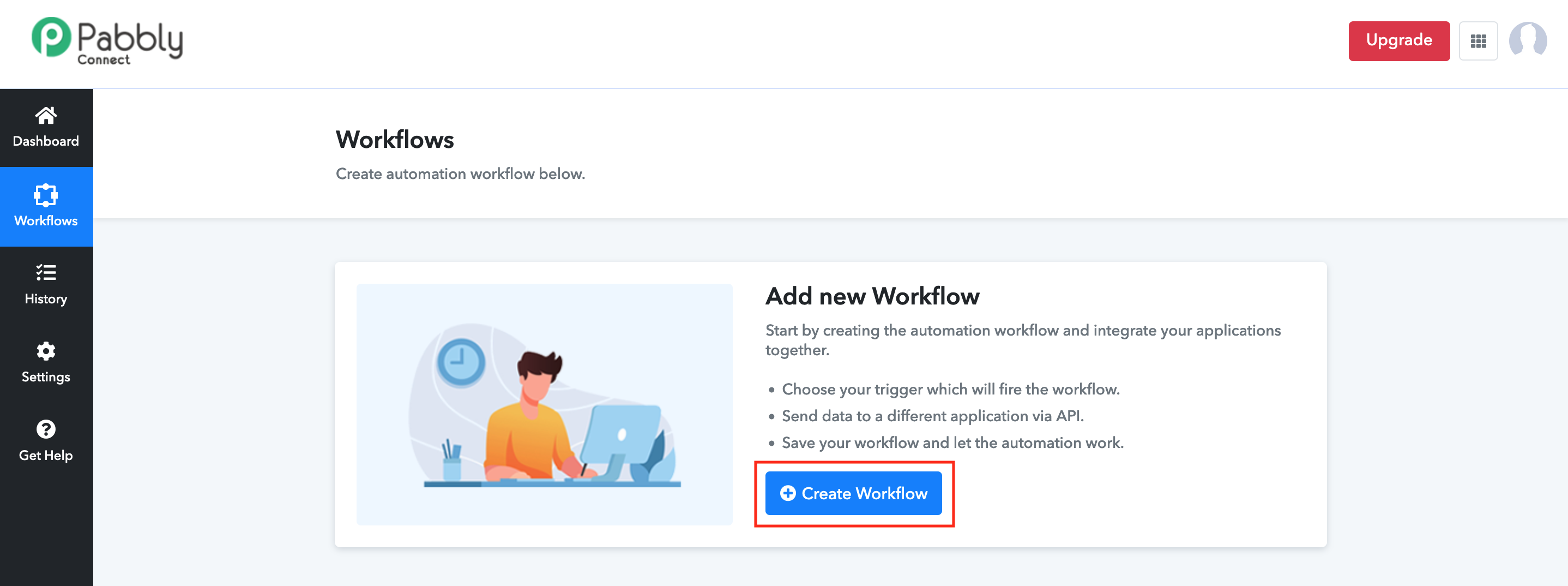
Fig. 2. Creating a new Workflow.
Step 3. Enter any friendly name for your Workflow, such as “Google Forms and DIDWW SMS Out” and click “Create”. (Fig. 3)
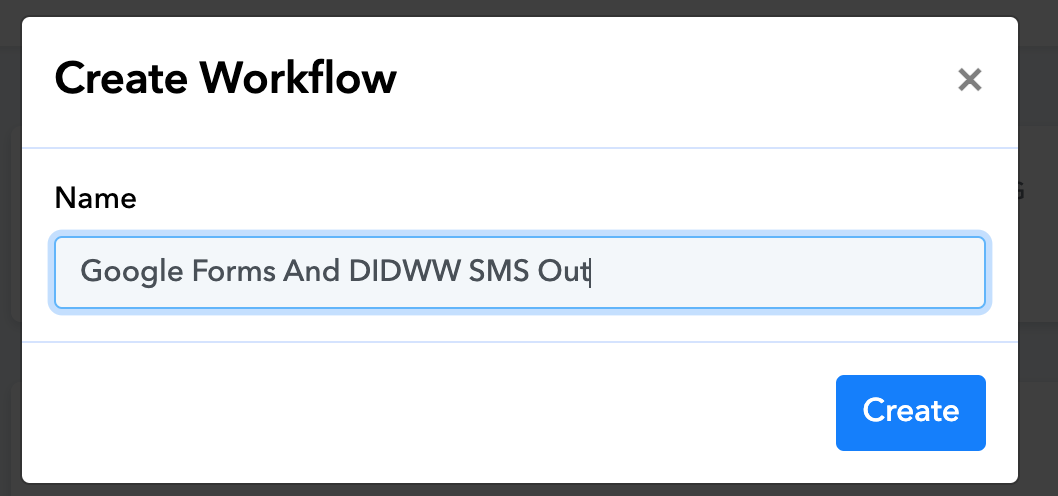
Fig. 3. Setting a Name of your Workflow
Step 4. Under the “Choose App” field search for “Google Forms” and select it. (Fig. 4).
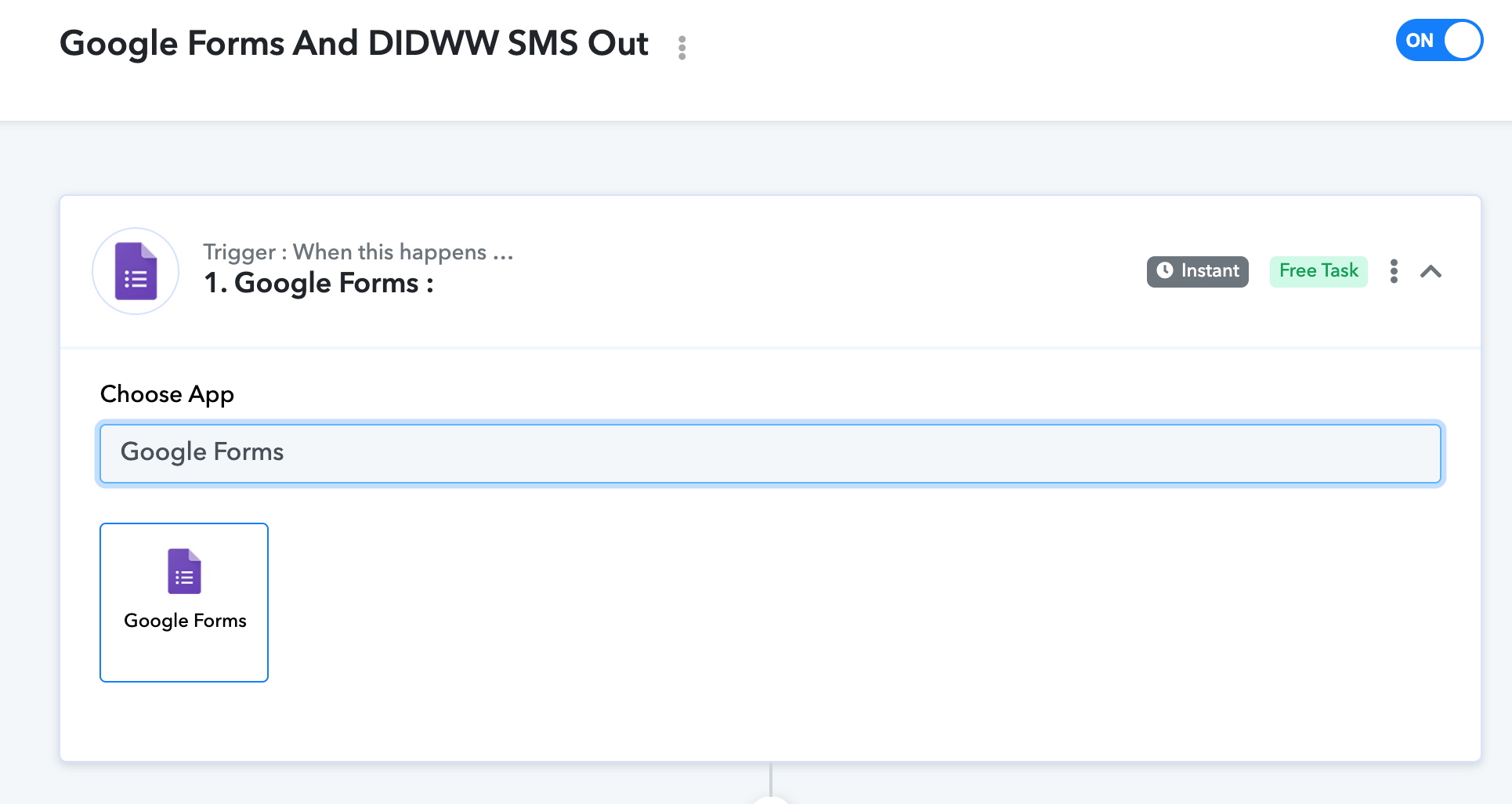
Fig. 4. Selecting Google Forms App
Step 5. Select “New Response Received” as your Trigger Event (Fig. 5).
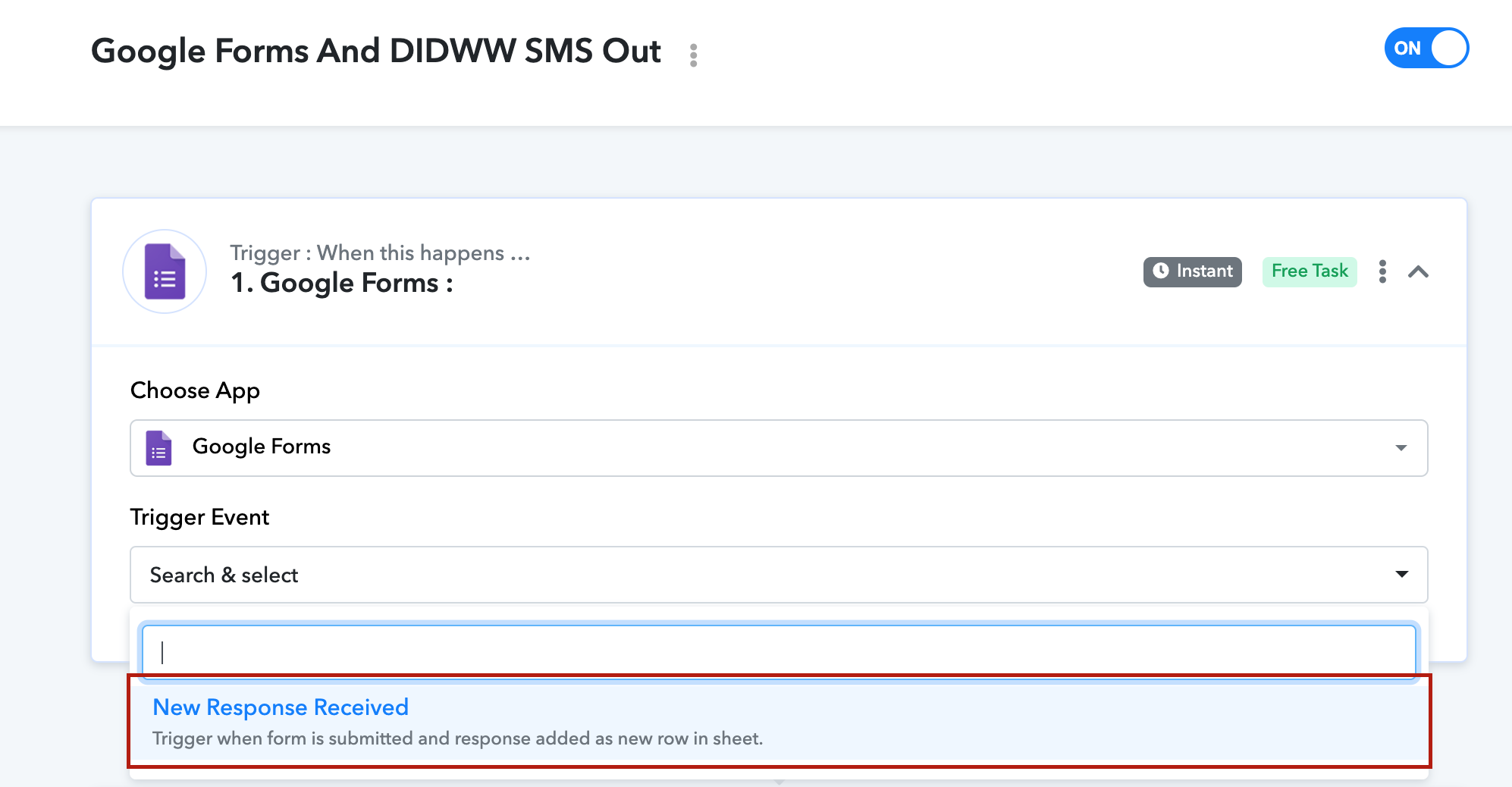
Fig. 5. Selecting the Trigger Event
Step 6. Copy the “Webhook URL” which is automatically generated by Pabbly. (Fig. 7) The URL will be used during Google Form configuration setup in Step 13 .
If you are aware of the Google Form setup process feel free to continue from Step 15 .
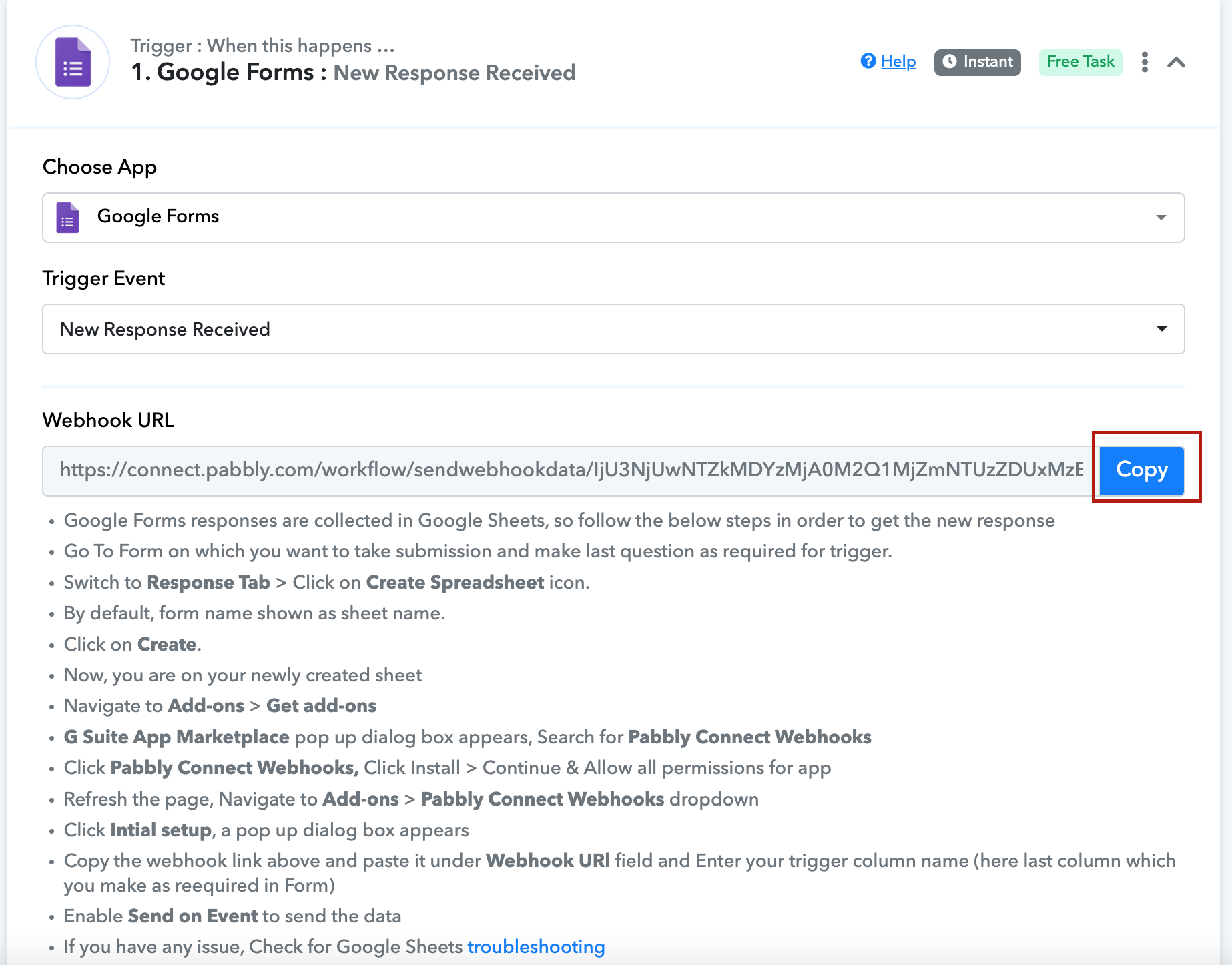
Fig. 6. Pablly Webhook URL for Google Forms
Step 7. Go to the Google Form created on Step 1 . and set both fields as “Required” for the trigger to function properly. (Fig. 7).
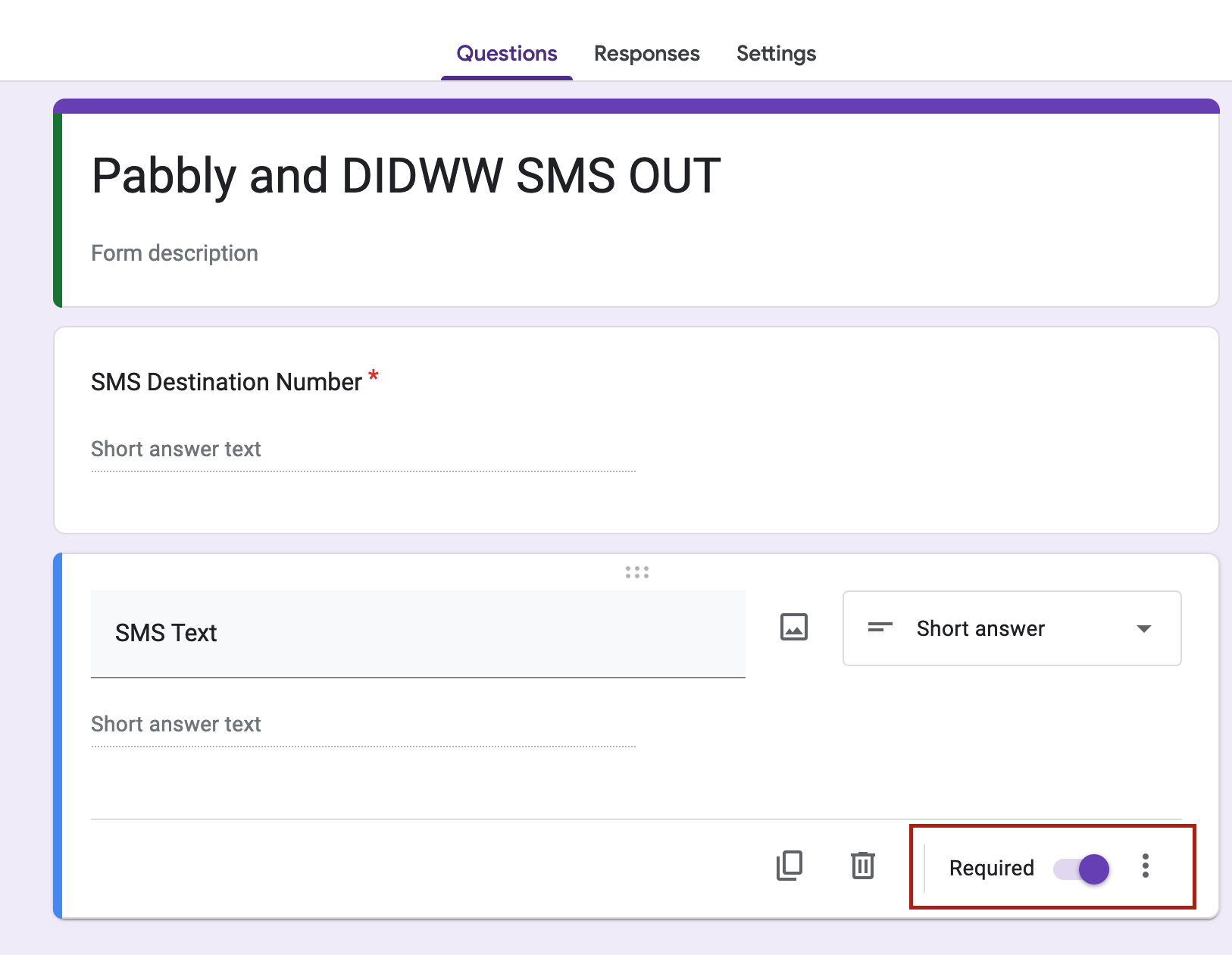
Fig. 7. Setting Google Form answers as “Required”
Step 8. Switch to the “Responses Tab” and click on the “Link to Sheets” icon, or click “View in Sheets” if you already have an assigned sheet for the Google Form (Fig. 8).
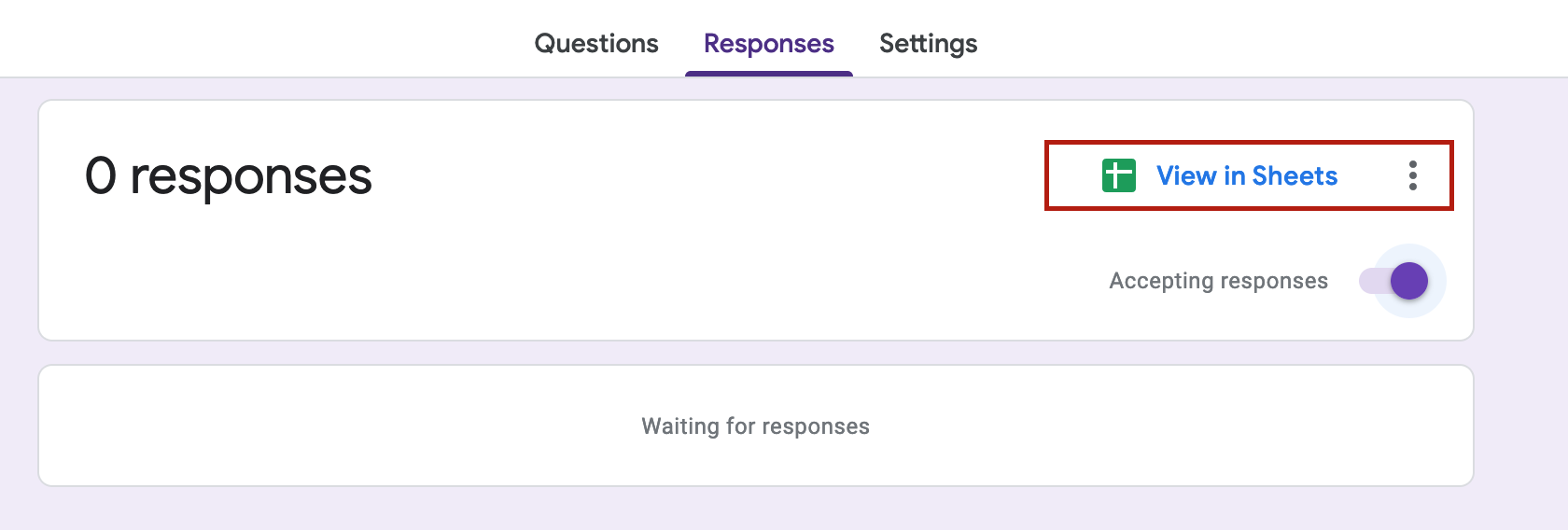
Fig. 8. Assigning sheets in the Google Form
Step 9. On the assigned sheet navigate to “Extensions” > “Add-ons” > “Get add-ons” (Fig. 9).

Fig. 9. Google Form accessing Add-ons.
Step 10. In the “Google Workspace Marketplace,” search for “Pabbly Connect Webhooks.” (Fig. 10).
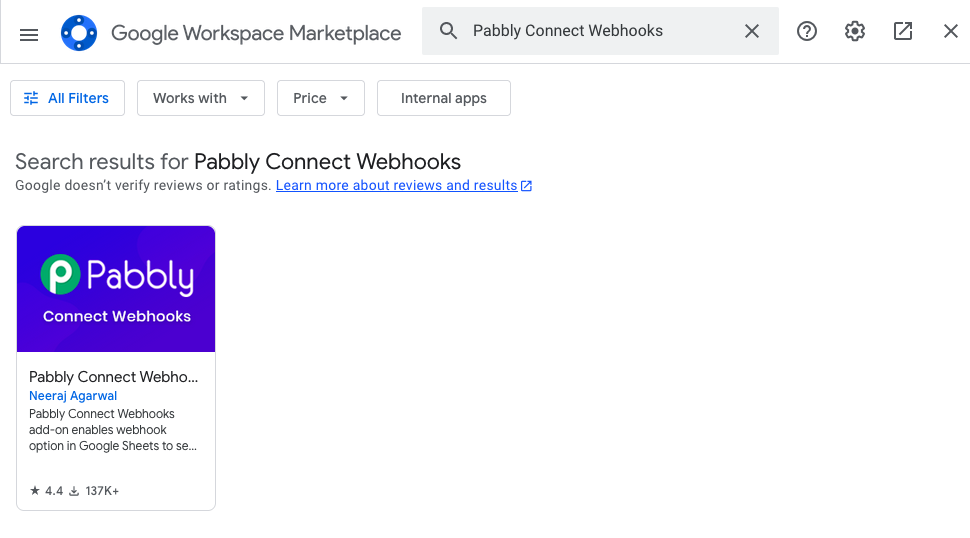
Fig. 10. Pabbly Connect Webhook addon
Step 11. Click “Pabbly Connect Webhooks”, select “Install > Continue” & “Allow all permissions” for the app (Fig. 11).

Fig. 11. Pabbly Connect Webhook app installation
Step 12. Refresh the sheet, Navigate to “Add-ons” > “Pabbly Connect Webhooks” dropdown menu, click “Initial setup” (Fig. 12).

Fig. 12. Google Form Pabbly Connect initial setup.
Step 13. Paste the Pabbly Webhook URL copied from Step 6 to the “Webhook URL” field and enter your trigger column’s last letter (example B) (e.g “SMS text” from Step 7) under the “Trigger Column” field (Fig. 13).
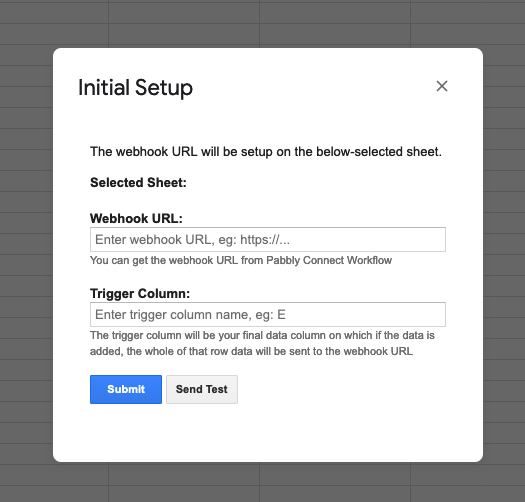
Fig. 13. Google Form Webhook Trigger.
Step 14. On the Google sheet navigate to “Extensions” > “Pabbly Connect Webhooks” and enable “Send on Event” to send the data (Fig. 14).

Fig. 14. Enabling “Send On Event” in Google sheets
Step 15. Click “Add Action Step” to add the next application for the Workflow process (Fig. 15).
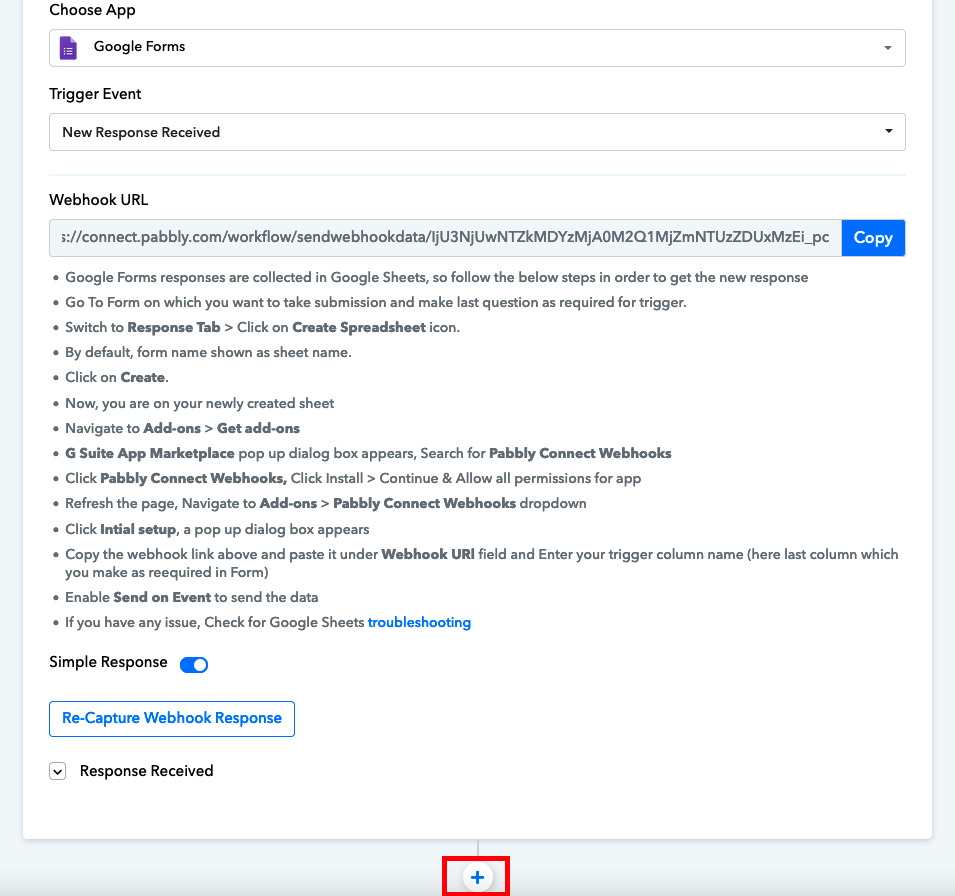
Fig. 15. Add Action Step
Step 16. Search for “DIDWW SMS OUT” app and select it (Fig. 16).
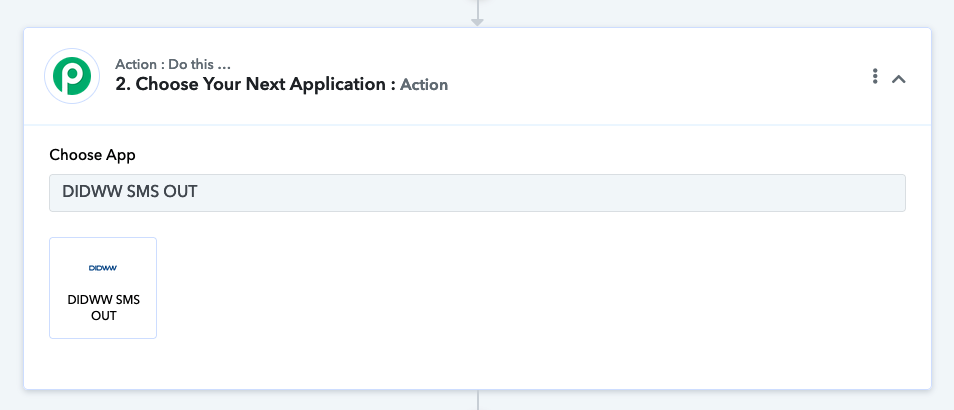
Fig. 16. Selecting the DIDWW SMS OUT app
Step 17. Search for “Send SMS Out” under the “Action Event” dropdown menu and click “Connect” (Fig. 17)

Fig. 17. Selecting the “Send SMS Out” action event
Step 18. Select “Add New connection”and enter any friendly name in the “New Connection Name” field. Your Username and Password fields must contain the credentials from the DIDWW SMS OUT Trunk on your DIDWW account.(Fig. 18). Click Save.
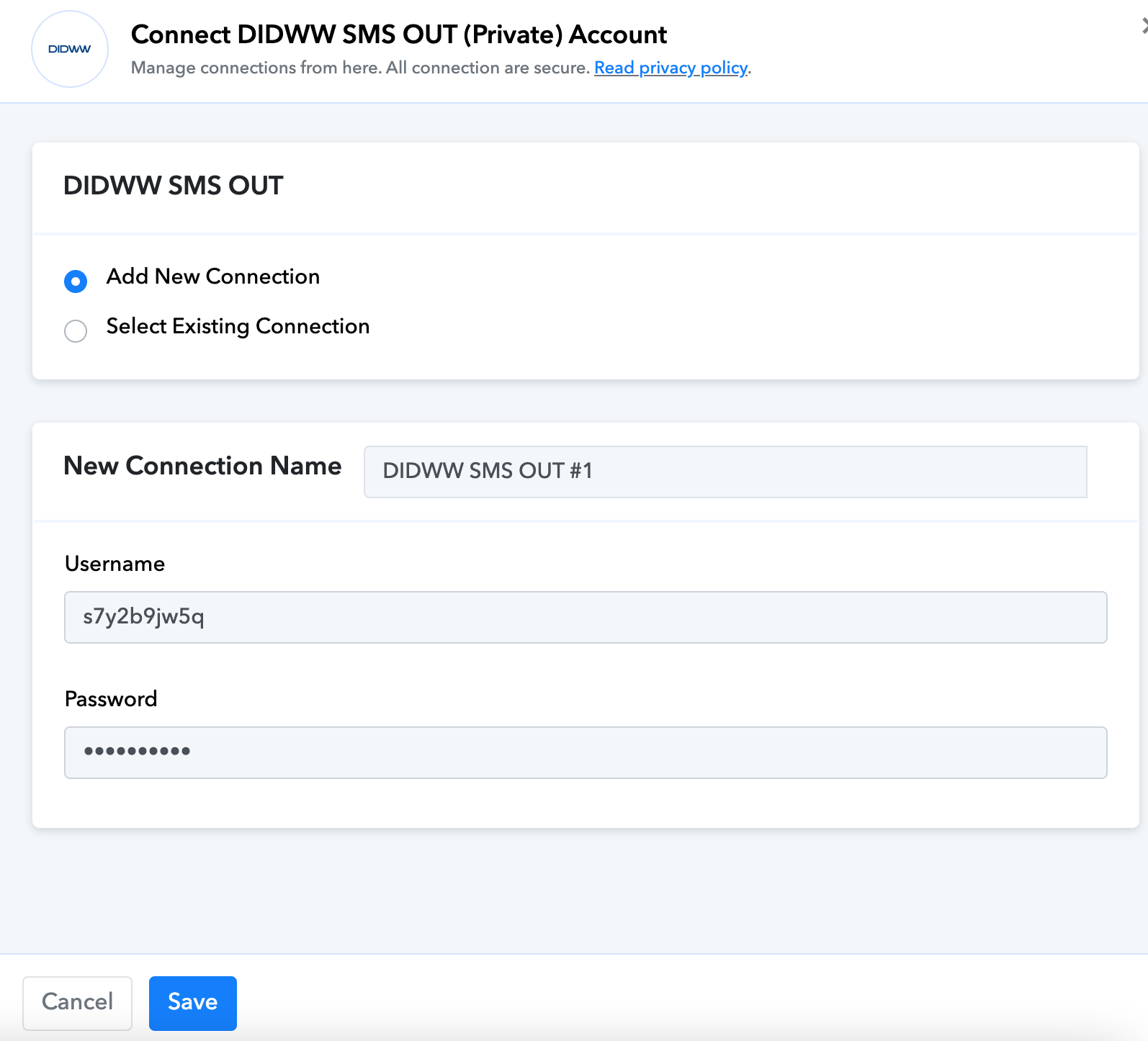
Fig. 18. Connecting the DIDWW SMS OUT trunk to Pabbly App.
Step 19. In the configuration menu (Fig. 19) you can add static values or use placeholders of previously created Google Form (Fig. 1).
For the “Source Number” add a static phone number. This should be an SMS enabled DID number existing on your DIDWW account and added to the “SMS HTTP OUT trunk” source addresses list . The accepted number formats are: E.164 or +E.164 (Country Code + Area Code + Number).
For the “Destination Number” select the “SMS Destination Number” the dropdown menu. The accepted number formats are: E.164 or +E.164 (Country Code + Area Code + Number).
For the “SMS Content Text” select the “SMS Text” from the dropdown menu.
After all fields have been selected click “Save” to save changes or alternatively click “Save & Send Test Request” to check request response on site.
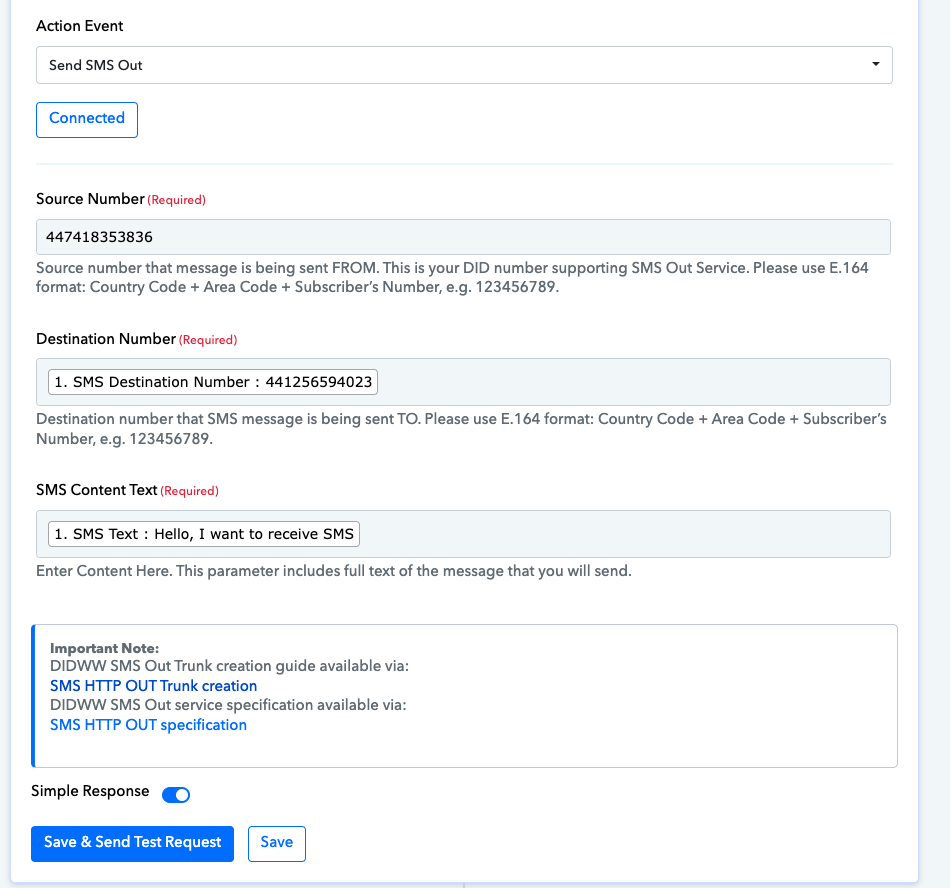
Fig. 19. Configuring action values
Attention
For fields “SMS destination number” and “SMS Content text” to appear from drop down menu list, in Google sheets, trigger option “Send all data” from Pabbly extensions settings (Extensions → Pabbly Connect Webhooks → Send all data) (Fig. 19.1.)
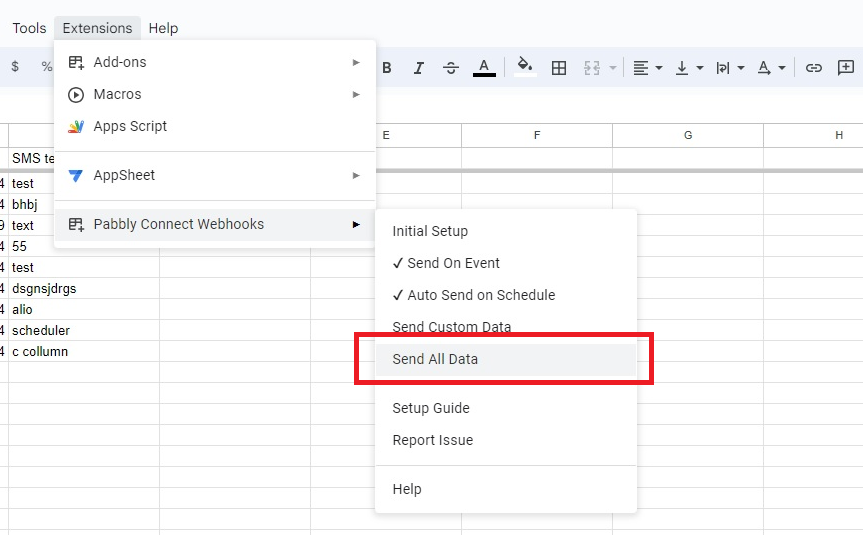
Fig. 19.1. Populating drop down menu.
Step 20. In case “Save & Send Test Request” is selected during Step 11. Pabbly platform will show the received request response (Fig. 20)
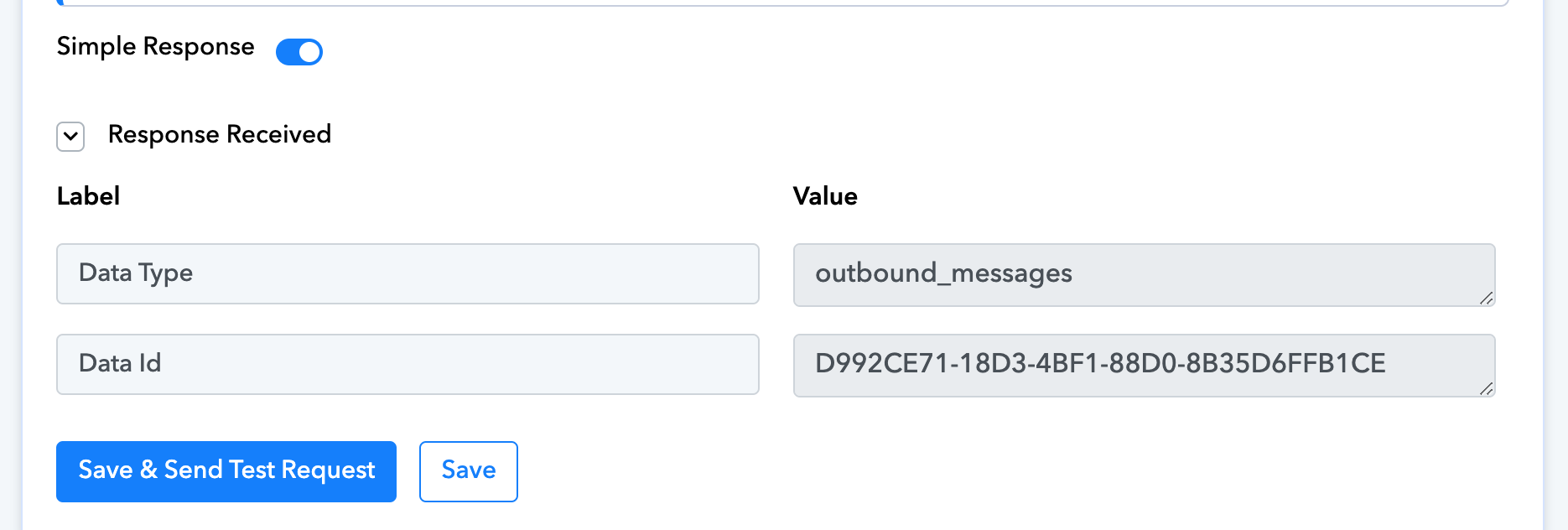
Fig. 20. Test Request response data
Step 21. Open your previously created Google Form, enter “SMS Destination Number”, “SMS Text” and click “Submit” (Fig. 21). An SMS message should be sent to the specified destination number with the entered text in it. If something went wrong and the SMS did not reach the destination number, you can check the Outbound SMS Log on your DIDWW account or in the Pabbly History logs.
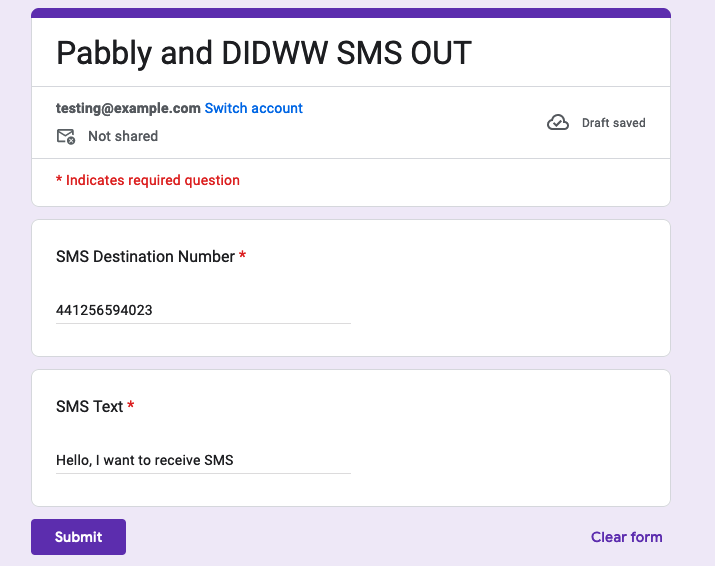
Fig. 21. Submitting Google Form
DIDWW SMS HTTP IN and Pabbly Webhook
DIDWW SMS IN service allows you to receive SMS messages to your existing DIDWW SMS enabled DID numbers. Pabbly Webhook allows DIDWW SMS IN service to be used with Apps available on Pabbly platform, enabling non-sms capable applications to receive SMS messages. For example, an incoming SMS message can create an event or task in your CRM or other task management software. Please read more about DIDWW SMS IN service.
Getting started
What you need to get started:
Configuring DIDWW SMS HTTP IN and Pabbly Webhook
As a use case example, we will connect a DIDWW SMS-enabled DID number so that incoming messages will be stored in Google Sheets. You may choose any other available Pabbly App required for your idea/automation/task/project as a Trigger for incoming DIDWW SMS messages.
Step 1. Create a “Workflow” in your Pabbly account (Fig. 1).
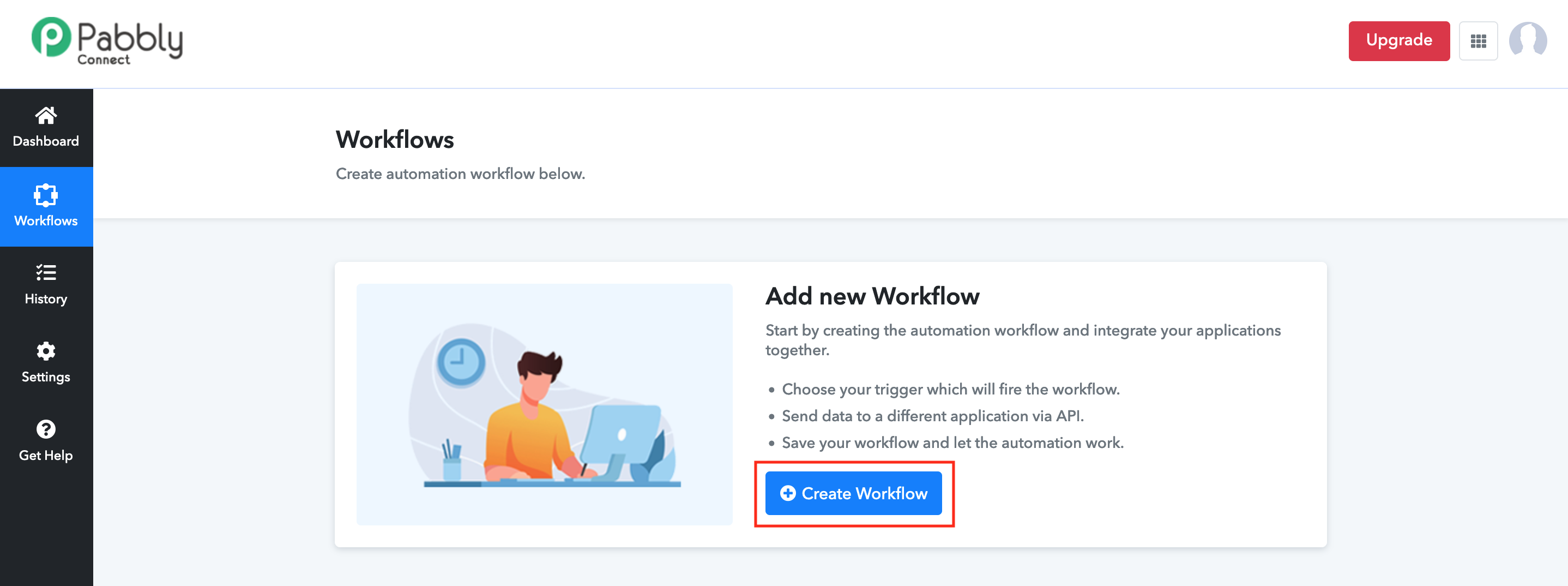
Fig. 1. Creating a new Workflow.
Step 2. Enter any friendly name for your Workflow, such as “DIDWW SMS IN And Google Sheets” and click “Create”. (Fig. 2)
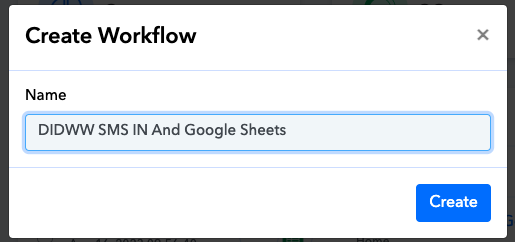
Fig. 2. Setting a name for your Workflow
Step 3 Under the “Choose App” field search for “DIDWW” and select it. (Fig. 3)
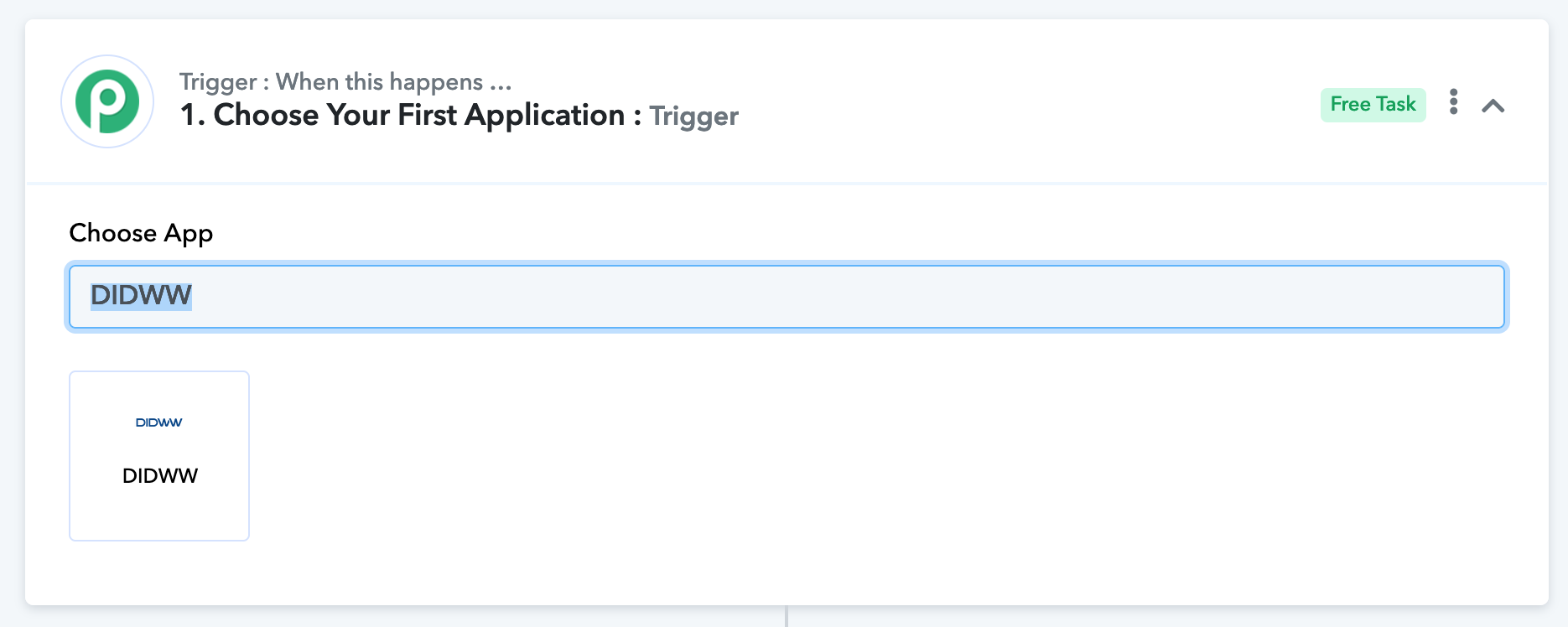
Fig. 3. Selecting “DIDWW” app
Step 4 Select “Receive SMS IN” as your Trigger Event (Fig.4).
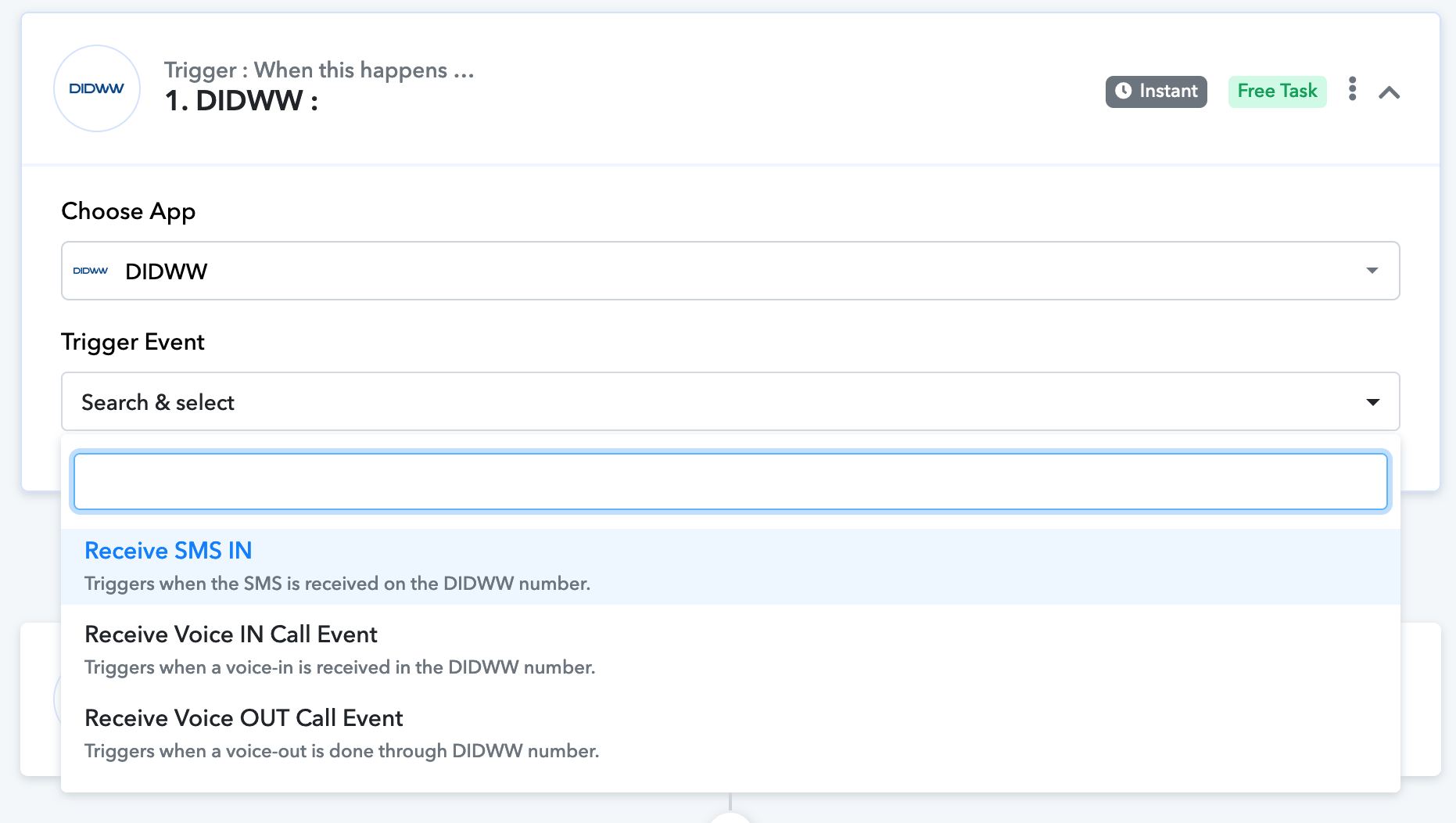
Fig. 4. Selecting “Receive SMS IN” Trigger Event
Step 5 Copy the “Webhook URL” which is automatically generated by Pabbly. (Fig. 5) The URL will be used during DIDWW SMS IN trunk configuration setup in STEP 6.
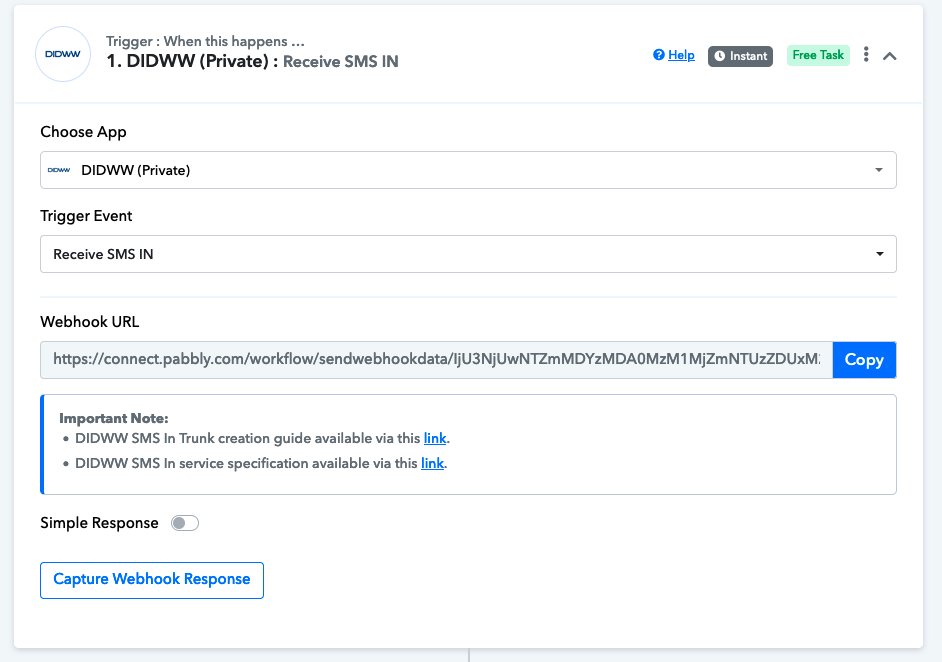
Fig. 5. Copying Pabbly Webhook URL
Step 6 On your DIDWW account create or edit the previously created SMS HTTP IN trunk (Fig. 6). Make the following trunk configurations:
Friendly name - any friendly name to identify your trunk.
HTTP method – select POST.
Request URL – paste Webhook URL which was copied in Step 5.
Body type - select JSON.
Request body – add the preferred placeholders. Example:
{ "Date Time" : "{SMS_TIME}", "Source Number" : "{SMS_SRC_ADDR}", "DID number" : "{SMS_DST_ADDR}", "Text" : "{SMS_TEXT}", "Text Encoded" : "{SMS_TEXT_BASE64_ENCODED}" }
Submit to save changes made to the HTTP IN trunk.
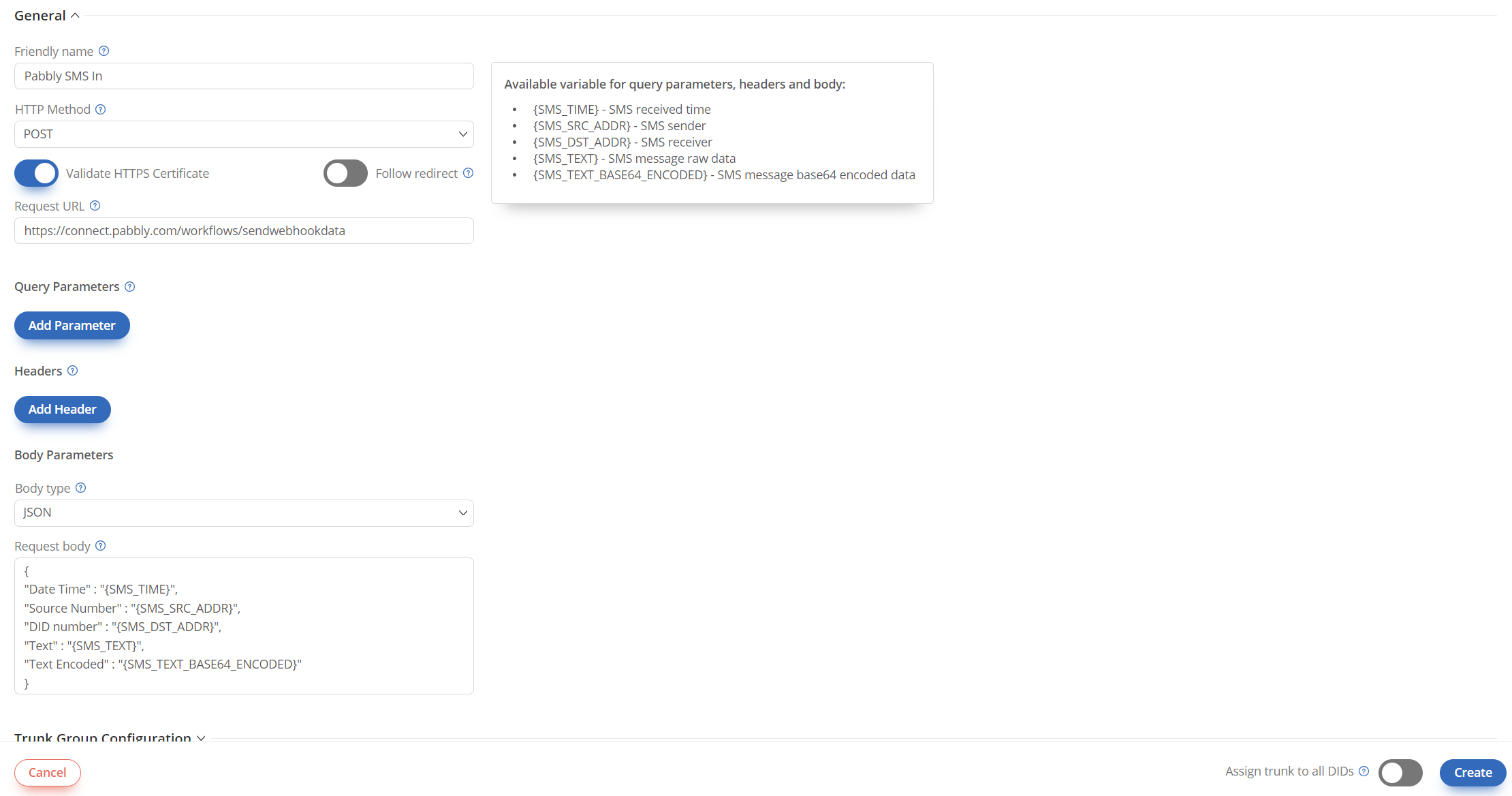
Fig. 6. Configure DIDWW SMS HTTP IN trunk
Step 7 Send a test SMS message from your mobile device to the DIDWW number for which the SMS trunk has been previously configured. If everything was done correctly you should see the values configured on the DIDWW SMS trunk appear (Fig. 7). Click “Continue”.
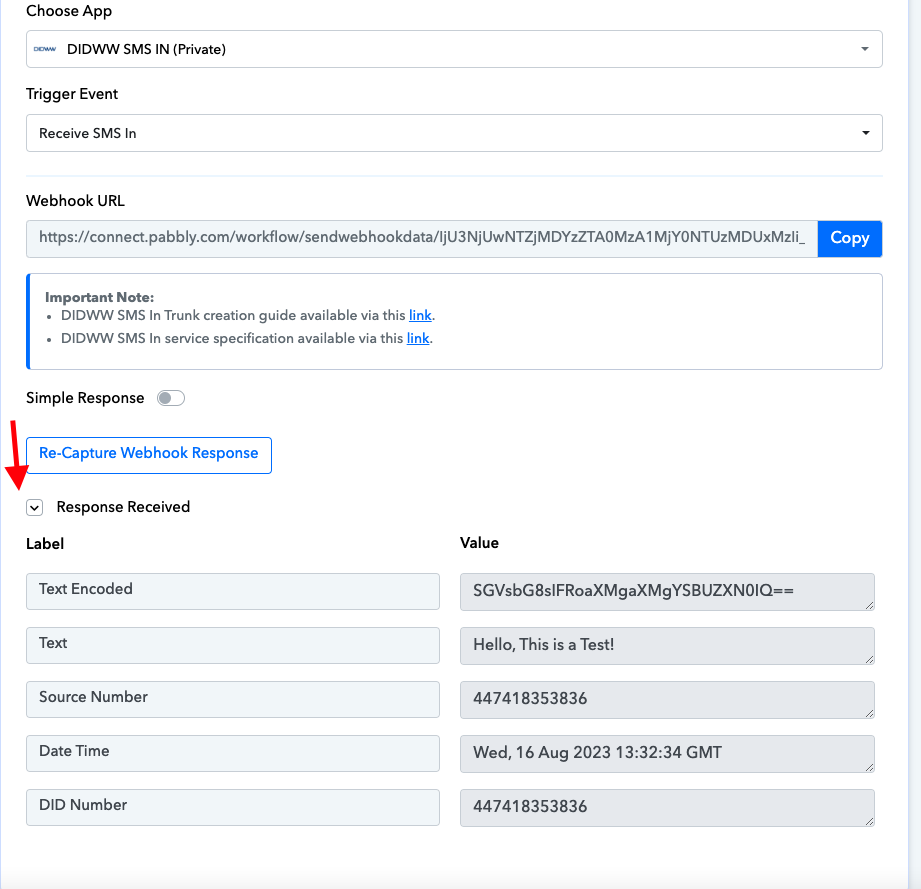
Fig. 7. Testing Pabbly webhook trigger
Step 8 Next, we will configure an Action event after a successful trigger. This guide uses Google Sheets as an example. Under the “Choose App” field search for “Google Sheets” and select it (Fig.8).
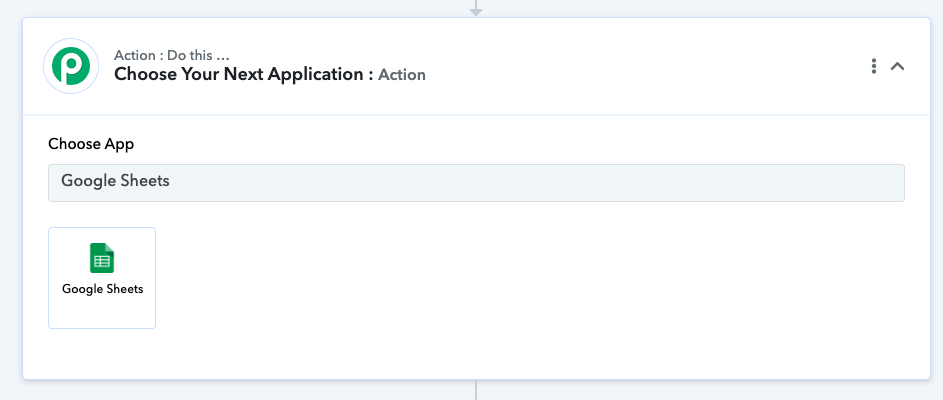
Fig. 8. Selecting Google Sheets App
Step 9 Select “Add New Row” from the action event selection dropdown list (Fig. 9).

Fig. 9. Selecting “Add New Row” action event
Step 10 Click “Connect”, choose “Add New Connection” or “Select Existing connection” and continue to ”Sign in with Google” (Fig 10.)
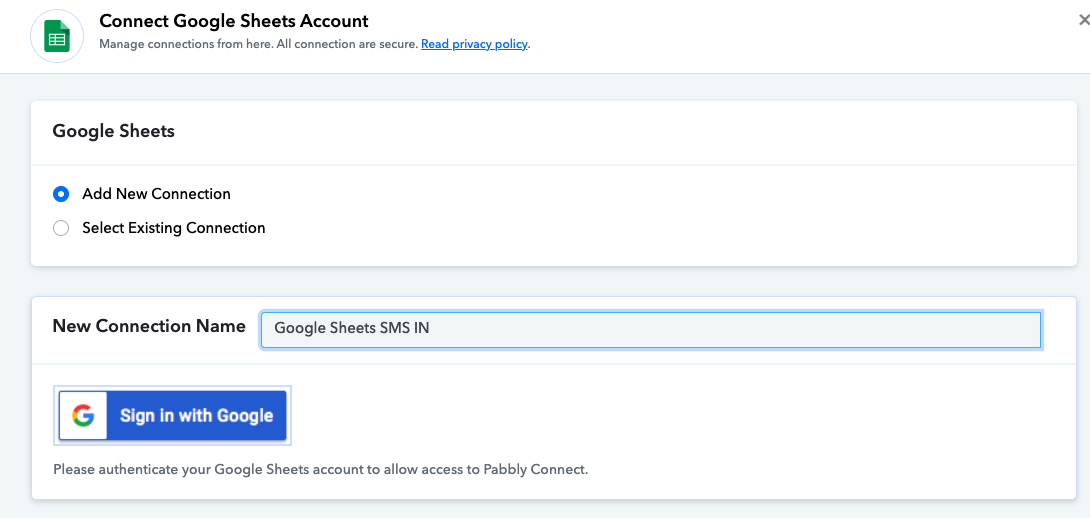
Fig. 10. Creating a “Google Sheets” connection
Step 11 Prepare a spreadsheet in Google Sheets with any relevant information. For our example we will be using Google Sheet file named “My Received Inbound SMS”, sheet named “Sheet1” and column names as “Datetime”, “Source number”, “Destination number”, “Text and Encoded Text” (Fig. 11).
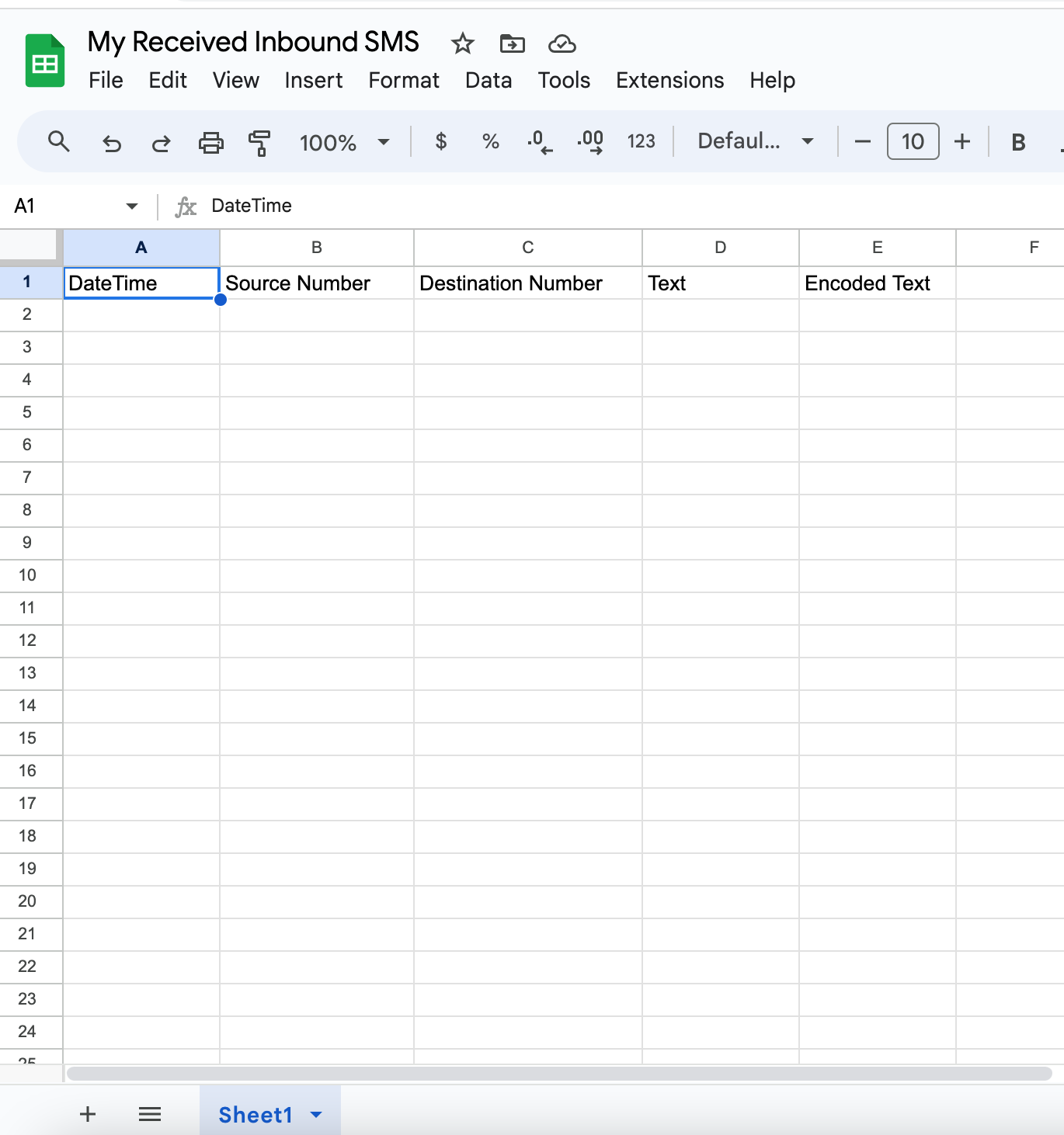
Fig. 11. Example of a “Google Spreadsheet”
Step 12 Once the “Google Sheets” file is ready, select the appropriate fields on Pabbly:
Select Spreadsheet: Choose the Google Sheets file where you wish to store the received SMS messages. For this example, the file is named “My Received Inbound SMS.”
Select Sheet: Pick the specific sheet within the Google Sheets file to record the data. In this instance, opt for “Sheet1.”
DateTime: In this field, set the column that will capture the date and time of each inbound SMS. From the “1. DIDWW SMS IN: Receive SMS in” dropdown list, select “Date Time.”
Source Number: Specify the column that will store the source phone numbers of the received messages. Select “Source Number” from the “1. DIDWW SMS IN: Receive SMS in” dropdown list.
Destination Number: Designate the column that will keep track of the destination numbers for each SMS. Choose “DID Number” from the “1. DIDWW SMS IN: Receive SMS in” dropdown list.
Text: Identify the column that will record the content of each received SMS. From the “1. DIDWW SMS IN: Receive SMS in” dropdown list, opt for “Text.”
Encoded Text: Define the column where the encoded version of each SMS text will be stored. Select “Text Encoded” from the “1. DIDWW SMS IN: Receive SMS in” dropdown list.
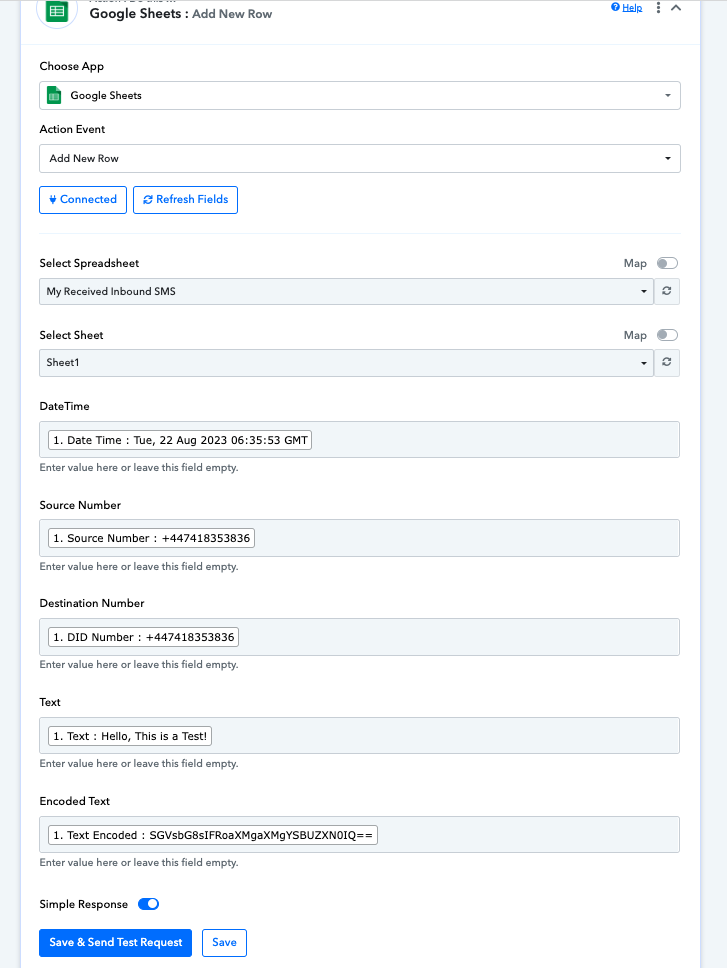
Fig. 12. Assigning fields on “Google Sheets” app from “DIDWW SMS IN” app
Step 13 Click “Save & Send Test Request” (Fig. 13) to review the data being transferred from Pabbly to the Google Sheets file and to check for any errors (Fig. 14). During this Test Request, the Google Sheets file will receive and store the data (Fig. 15). Alternatively, you can simply click “Save” if you prefer to bypass the testing request.

Fig. 13. Testing setup by clicking “Save & Send Test Request”
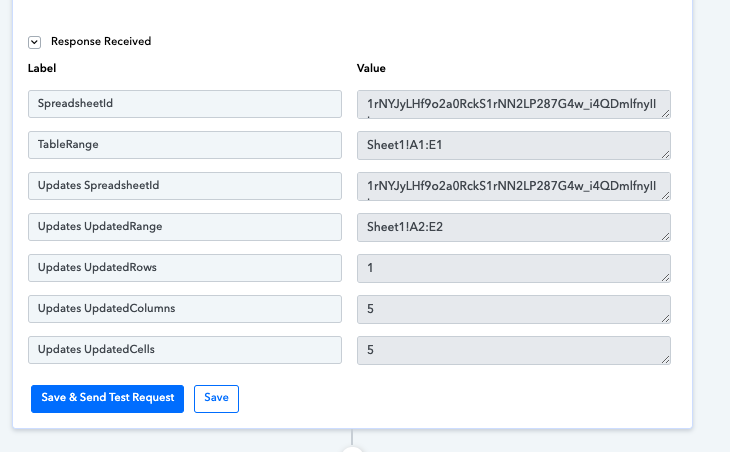
Fig. 14. Data passed from Pabbly to Google Spreadsheet

Fig. 15. Data passed and stored from Pabbly to Google Spreadsheet file
DIDWW Voice IN Call Events and Pabbly Webhook
The DIDWW Voice IN Call Events enable you to receive event notifications for incoming calls to your existing DIDWW DID numbers. Used in conjunction with Pabbly Webhook, this feature allows you to integrate other applications to receive information about calls that are initiated, connected, or terminated to a specific DID number. For instance, you can set it up so that incoming voice calls trigger an event or task within your preferred CRM or task management software. To learn more, read about DIDWW Voice IN Call Events.
Getting started
What you need to get started:
Configuring DIDWW Voice IN Call Events and Pabbly Webhook
In this use case example, we will set up DIDWW Voice IN Call Events for a specific DID number. When a call is made to that number, the details will be forwarded to HubSpot CRM, where a ticket will be automatically created with the relevant data. While we are using HubSpot CRM for this example, you have the flexibility to choose any other Pabbly App that suits your specific needs, idea, automation task, or project as an Action for DIDWW Voice IN Call Events.
Step 1 Create a “Workflow” in your Pabbly account (Fig. 1).
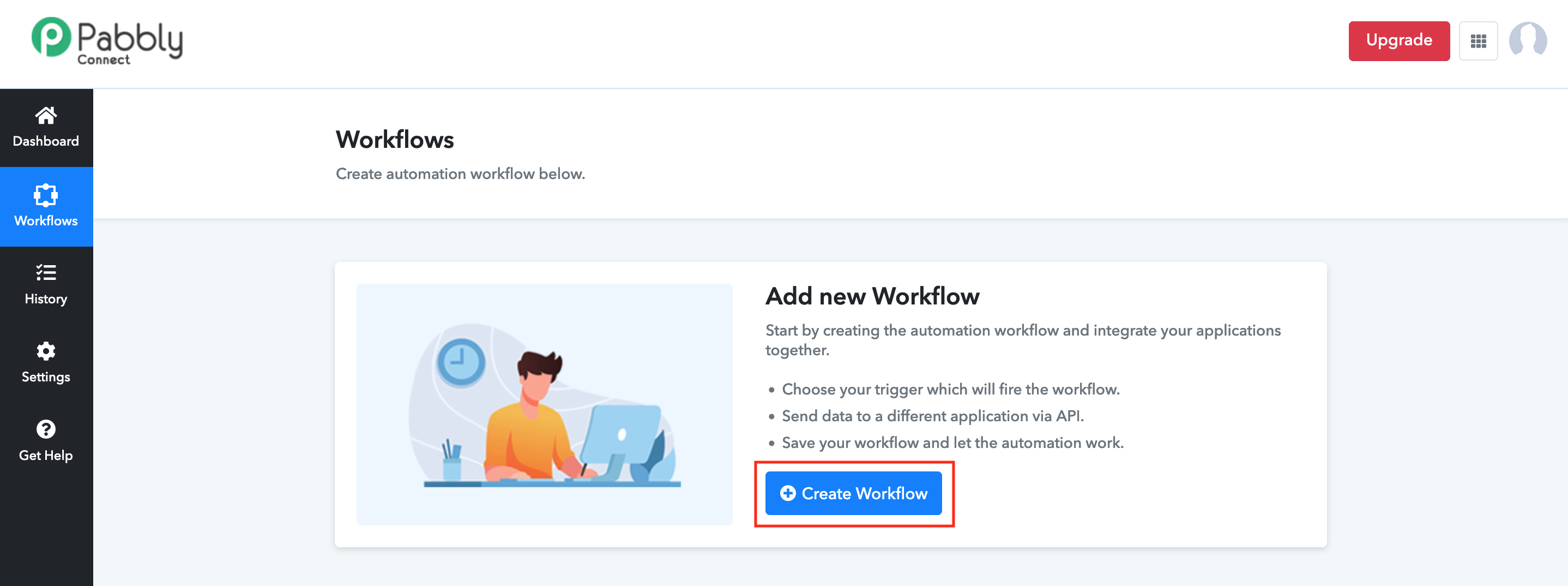
Fig. 1. Creating a new Workflow
Step 2 Enter any friendly name for your Workflow, such as “DIDWW VOICE IN Call Events And HubSpot CRM” and click “Create”. (Fig. 2)
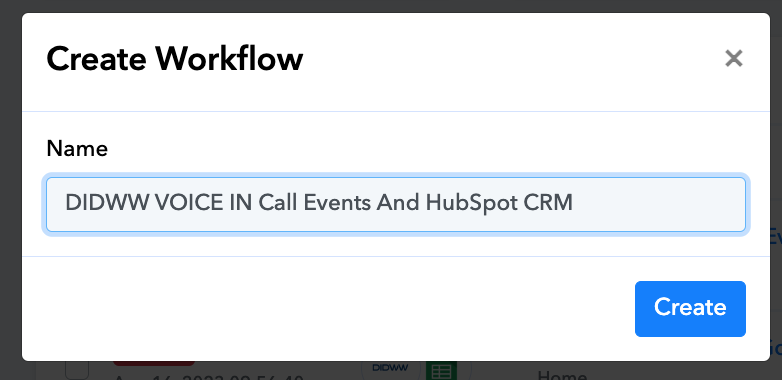
Fig. 2. Setting a Name of your Workflow
Step 3 Under the “Choose App” field search for “DIDWW” and select it. (Fig. 3)
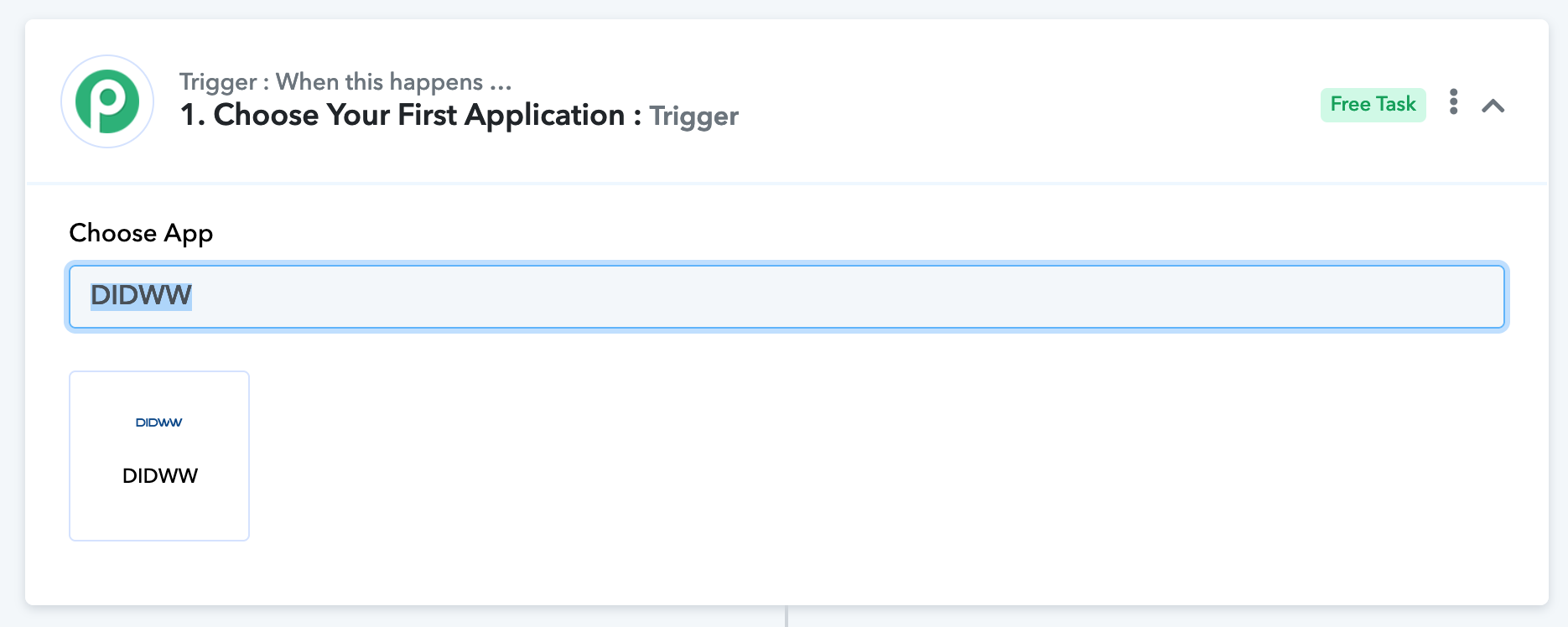
Fig. 3. Selecting “DIDWW” app
Step 4 Select “Receive Voice IN Call Event” as your Trigger Event (Fig. 4).
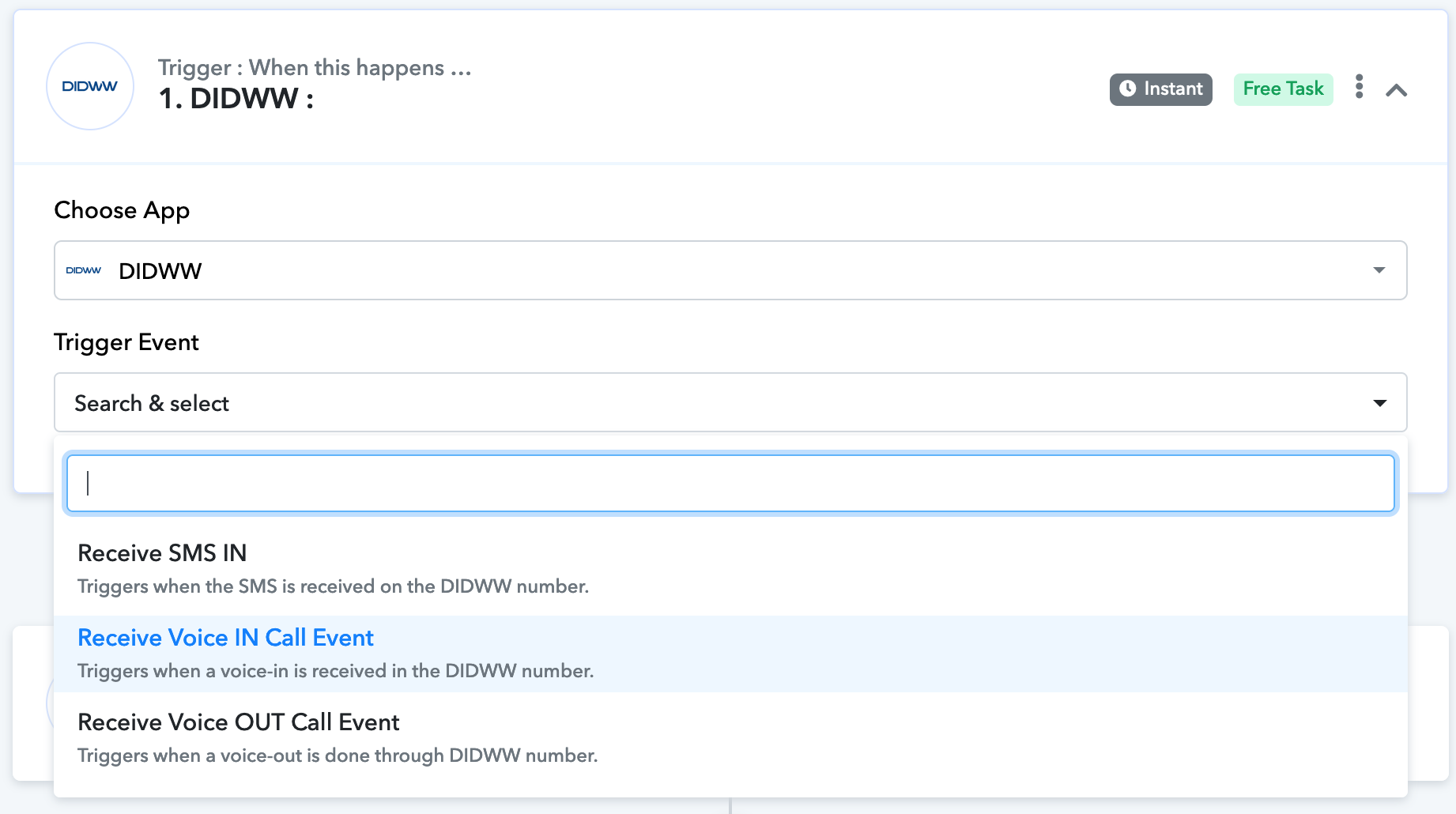
Fig. 4. Selecting “Receive Voice IN Call Event” Trigger Event
Step 5 Copy the “Webhook URL” that is automatically generated by Pabbly (see Fig. 5). This URL will be utilized in STEP 6 for setting up DIDWW Voice IN Call Events configuration.
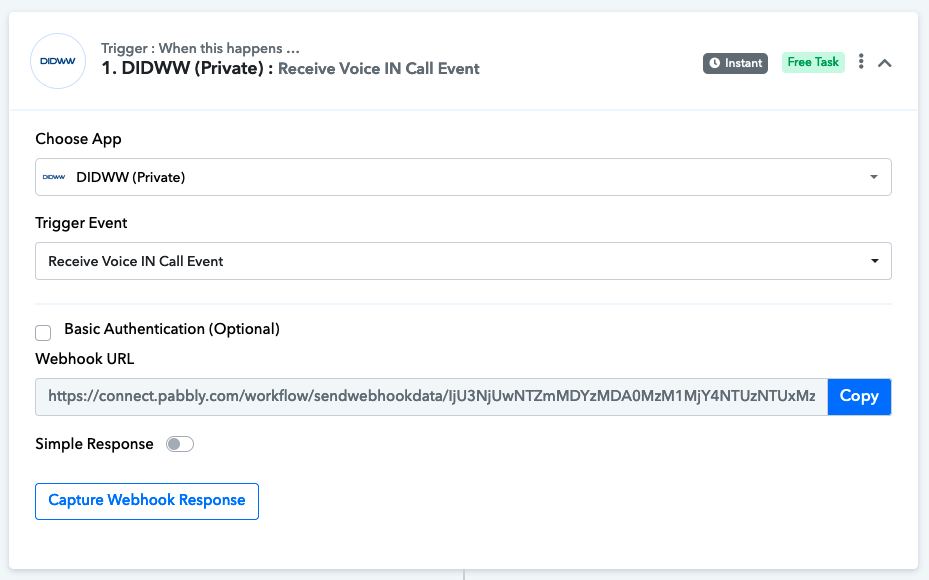
Fig. 5. Copy Pabbly Webhook URL
Step 6 Log in to your DIDWW account and navigate to section APIs -> Call Events API -> Call Events and then click Configure for Voice IN service (Fig. 6).
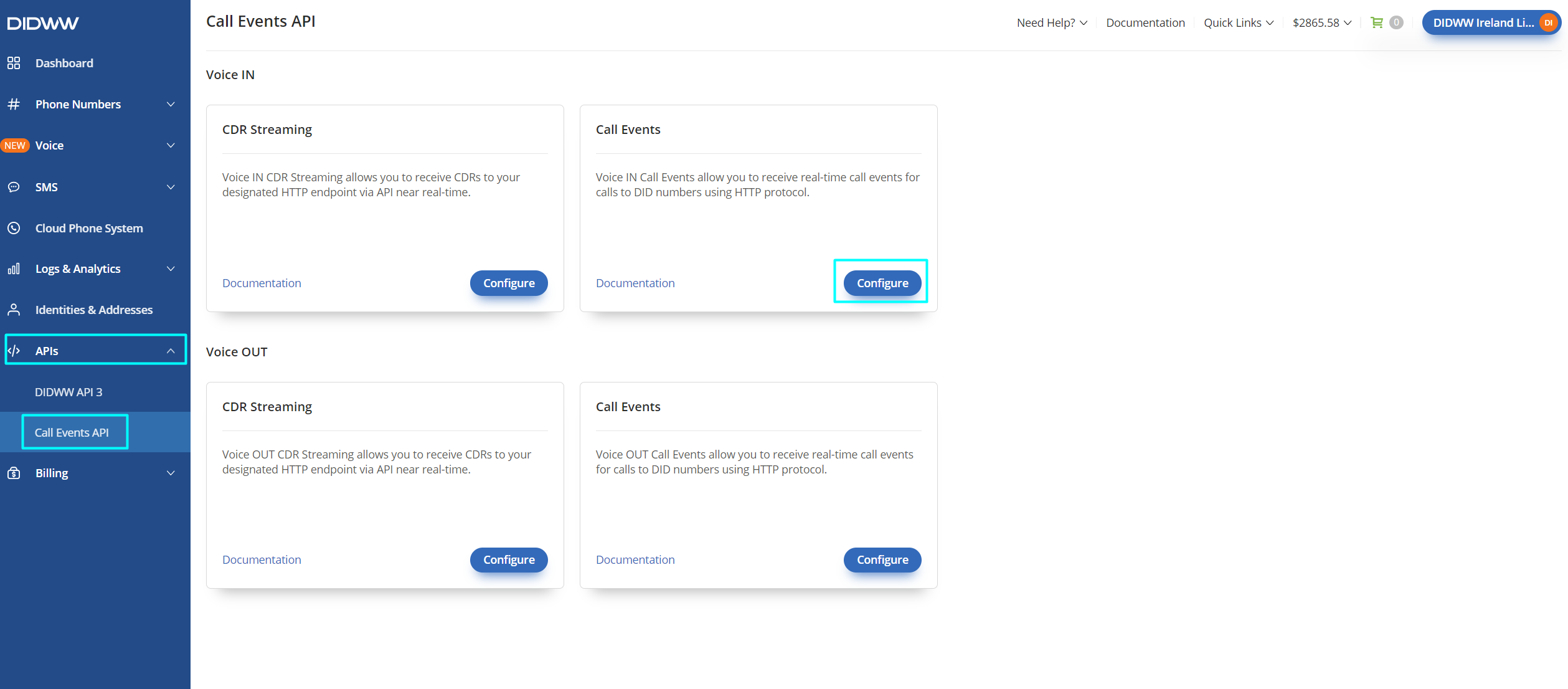
Fig. 6. Enabling and configuring DIDWW Voice IN Call Events.
Step 7 On the Voice IN Call Events configuration page (Fig. 7), input the Pabbly Webhook URL address that you generated in step 5. Make sure to disable GZIP compression, and then click “Submit” to save your settings.
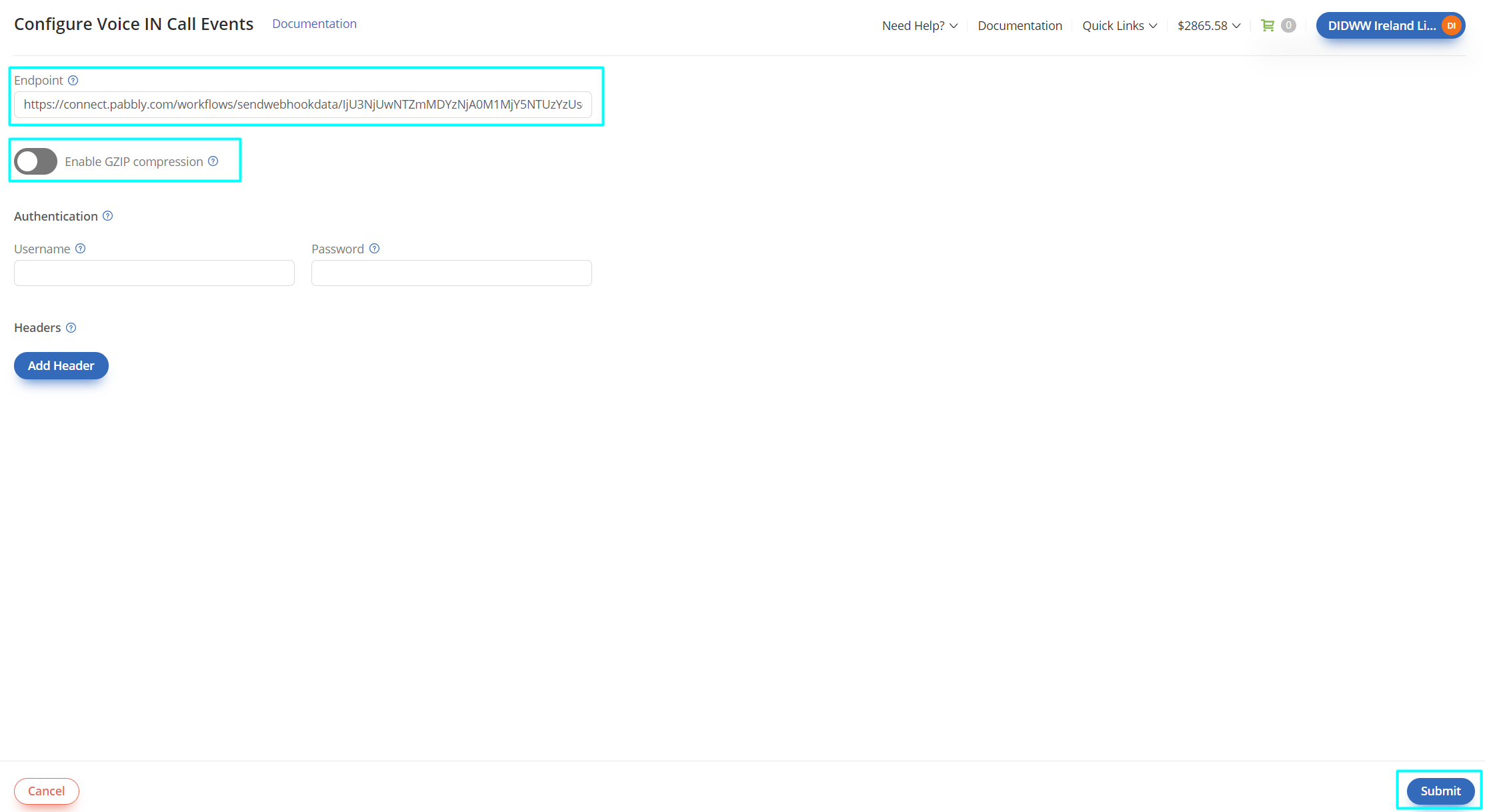
Fig. 7. Add Pabbly URL address and disable GZIP compression.
Step 8 Place a test call to any of your DIDWW DID numbers. Once a webhook request is detected, the call data will be displayed in the Pabbly Test Trigger form (Fig. 8).
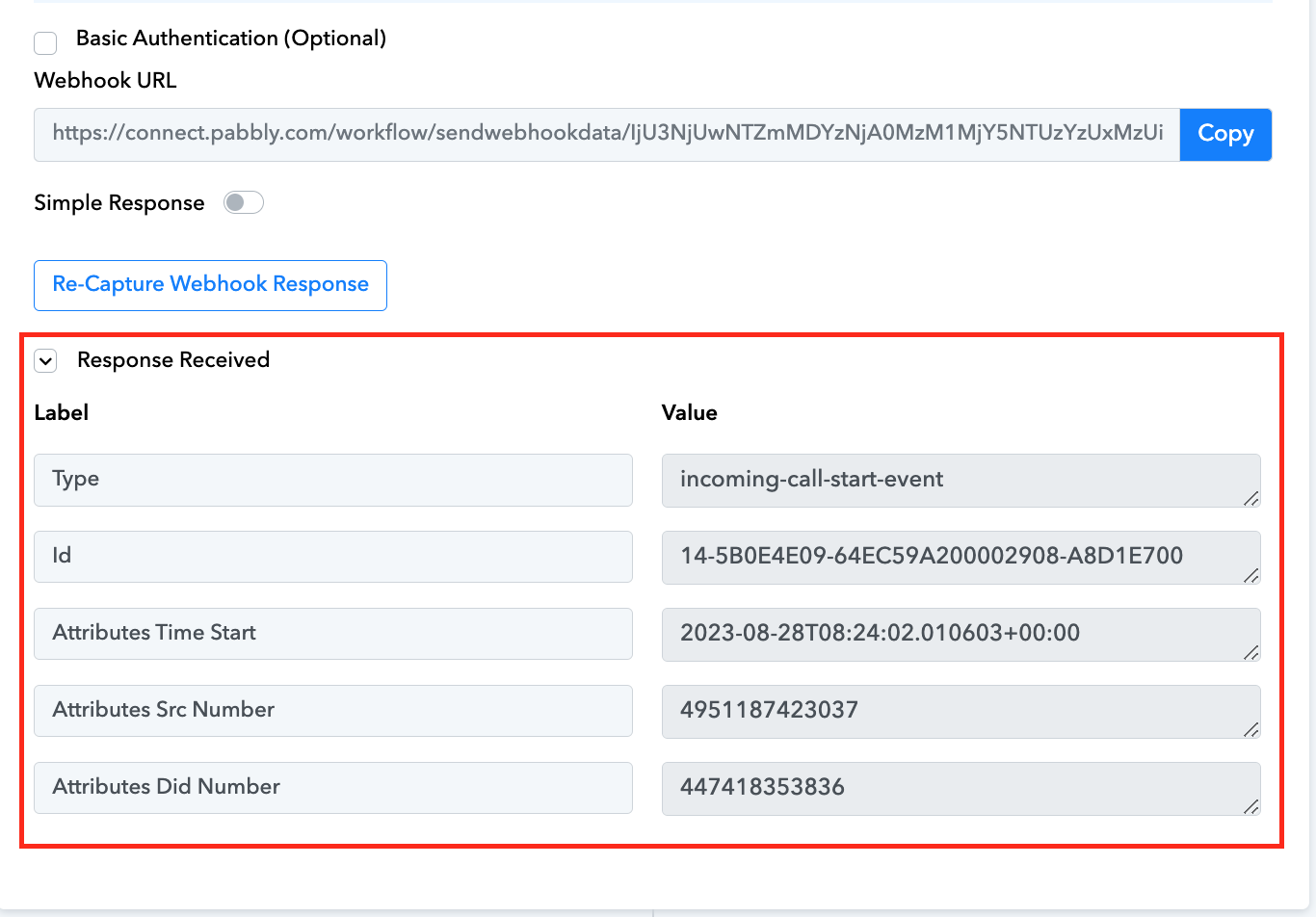
Fig. 8. Captured test Webhook response
Step 9 DIDWW Voice IN Call Events send three requests (incoming-call-start-event, incoming-call-connect-event, incoming-call-end-event). Full details and all possible values of DIDWW Voice IN Call Events can be found here . For our specific scenario we will focus on creating HubSpot Tickets using the “incoming-call-start-event”.
Click the “Add Action Step” button, search for “Filter” and select it (Fig. 9).
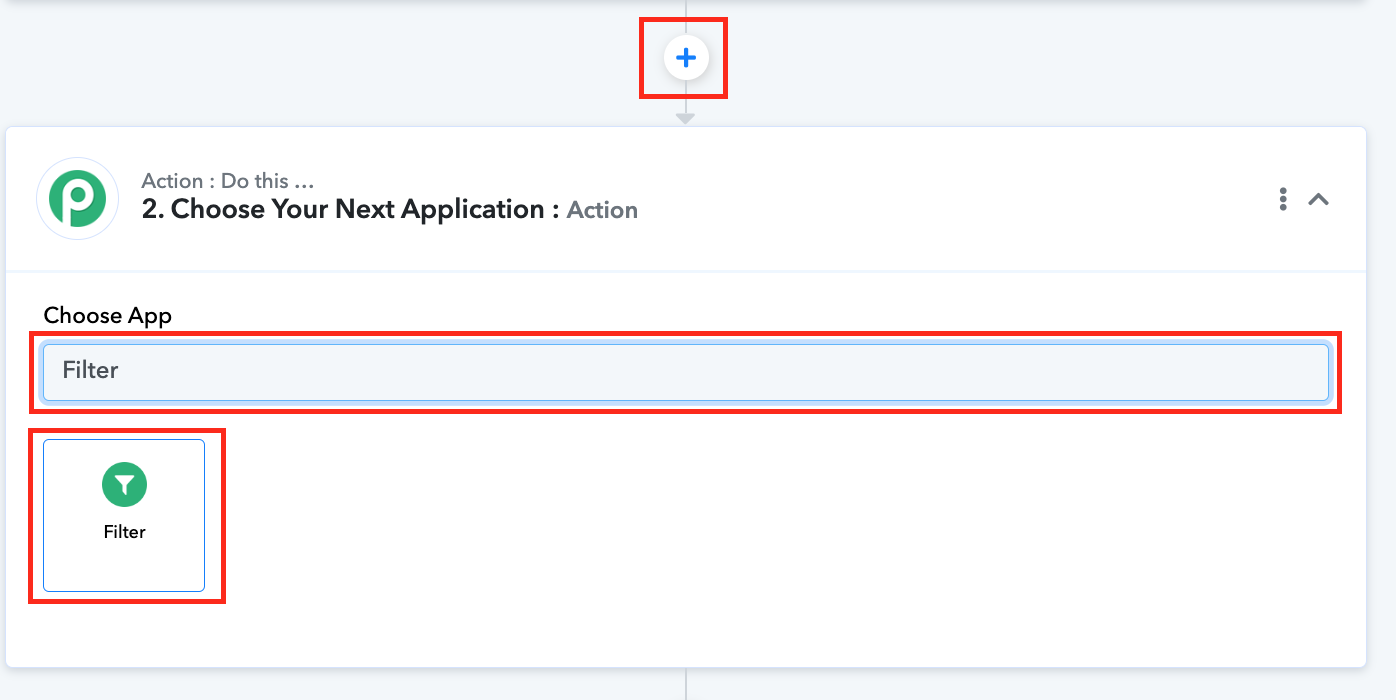
Fig. 9. Selecting “Filter” as Action Step
Step 10 Use Case: “Create HubSpot Ticket for All Calls (Our Scenario)”
In the first dropdown labeled “Select Label,” choose “Type”
In the second dropdown labeled “Filter Type,” choose “Equal to”
In the third box labeled “Value,” enter the text “incoming-call-start-event”
Click the “Save & Send Test Request” button to Save configuration and review the received response (Fig. 10).
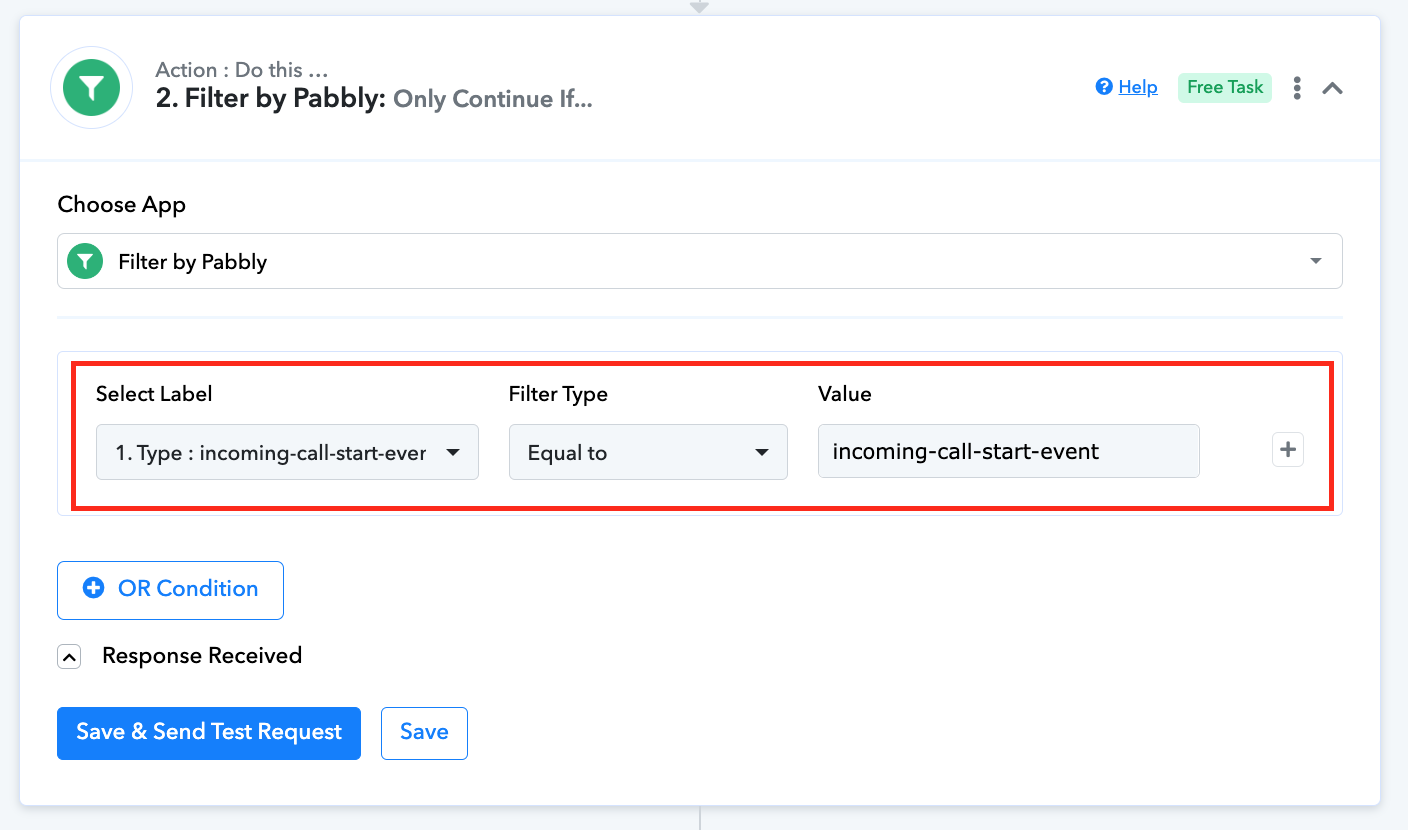
Fig. 10. Use case: “Create HubSpot Ticket for all calls (our scenario)” action “Filter” configuration
Use Case: “Create HubSpot Ticket for Only Answered Calls”
In the first dropdown labeled “Select Label,” choose “Type” In the second dropdown labeled “Filter Type,” choose “Equal to” In the third box labeled “Value,” enter the text “incoming-call-connect-event”
Click the “Save & Send Test Request” button to Save configuration and review the received response (Fig. 11).
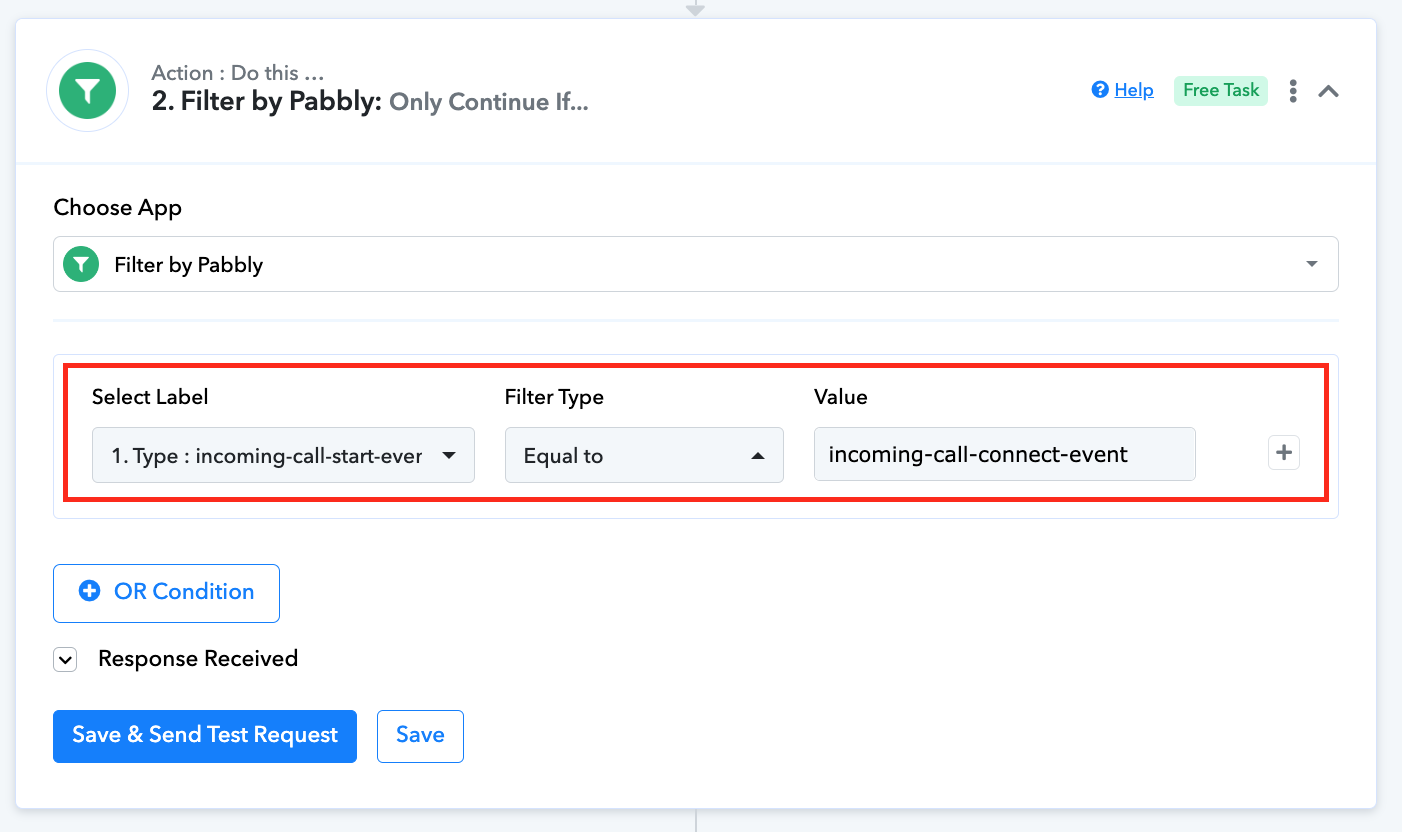
Fig. 11. Use case: “Create HubSpot Ticket for only answered calls” action “Filter” configuration
Use Case: “Create HubSpot Ticket for Only Not Answered/Missed Calls”
In the first dropdown labeled “Select Label,” choose “Type” In the second dropdown labeled “Filter Type,” choose “Equal to” In the third box labeled “Value,” enter the text “incoming-call-end-event”
Click the “+” (plus) sign to add additional filtering condition:
In the first dropdown labeled “Select Label,” choose “Type” In the second dropdown labeled “Filter Type,” choose “Equal to” In the third box labeled “Value,” enter the text “0”
Click the “Save & Send Test Request” button to Save configuration and review the received response (Fig. 12).
Click the “Add Action Step” button, search for “HubSpot” and select it (Fig. 13).
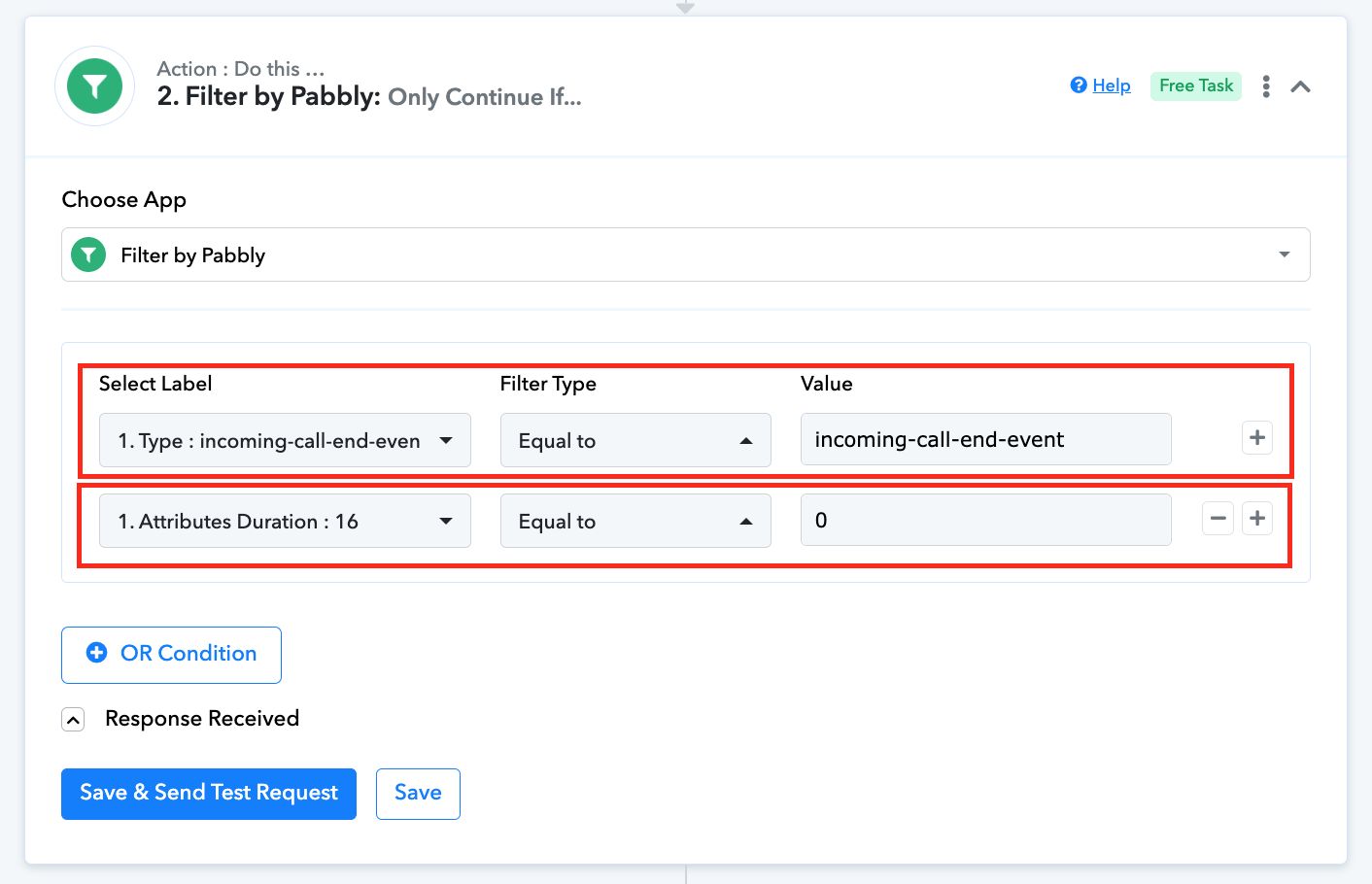
Fig. 11. Use case: “Create HubSpot Ticket for only answered calls” action “Filter” configuration
Step 10 Click the “Add Action Step” button, search for “HubSpot” and select it (Fig. 13).
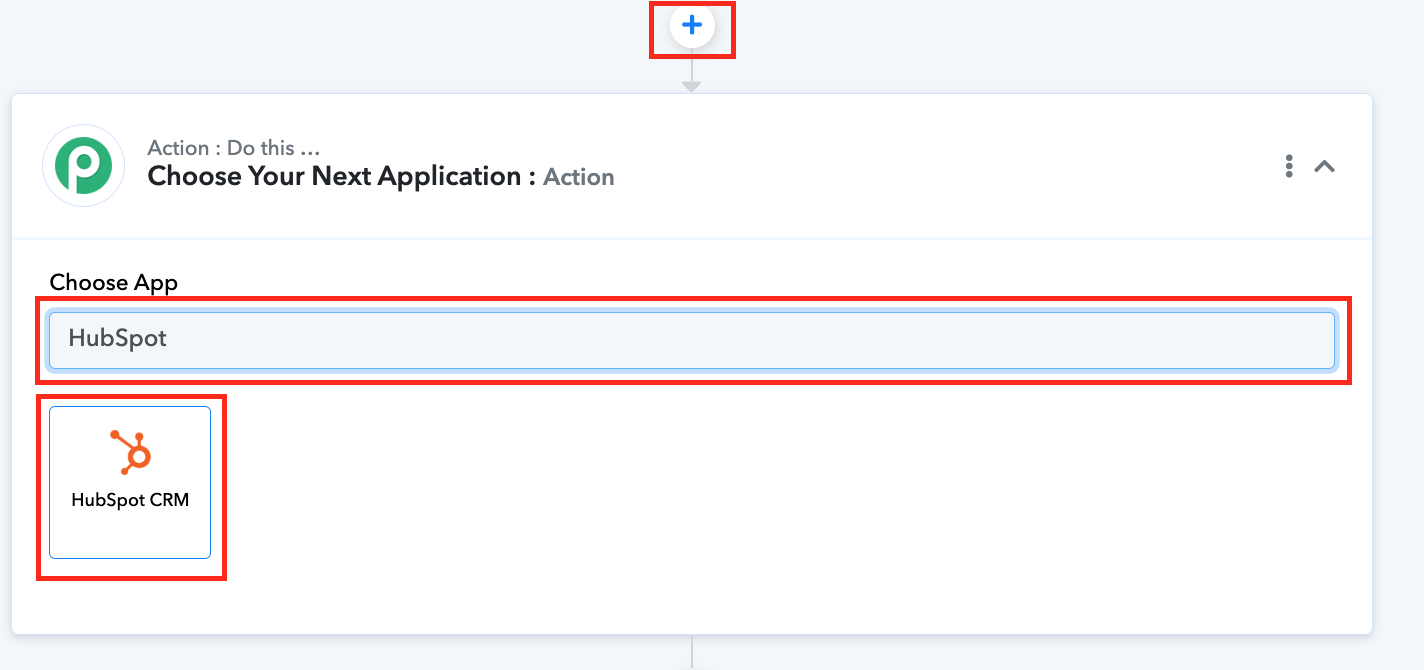
Fig. 13. Selecting “HubSpot CRM” app.
Step 12 Expand the “Action Event” dropdown list and select “Create a Ticket” event (Fig. 14). Click “Connect”.
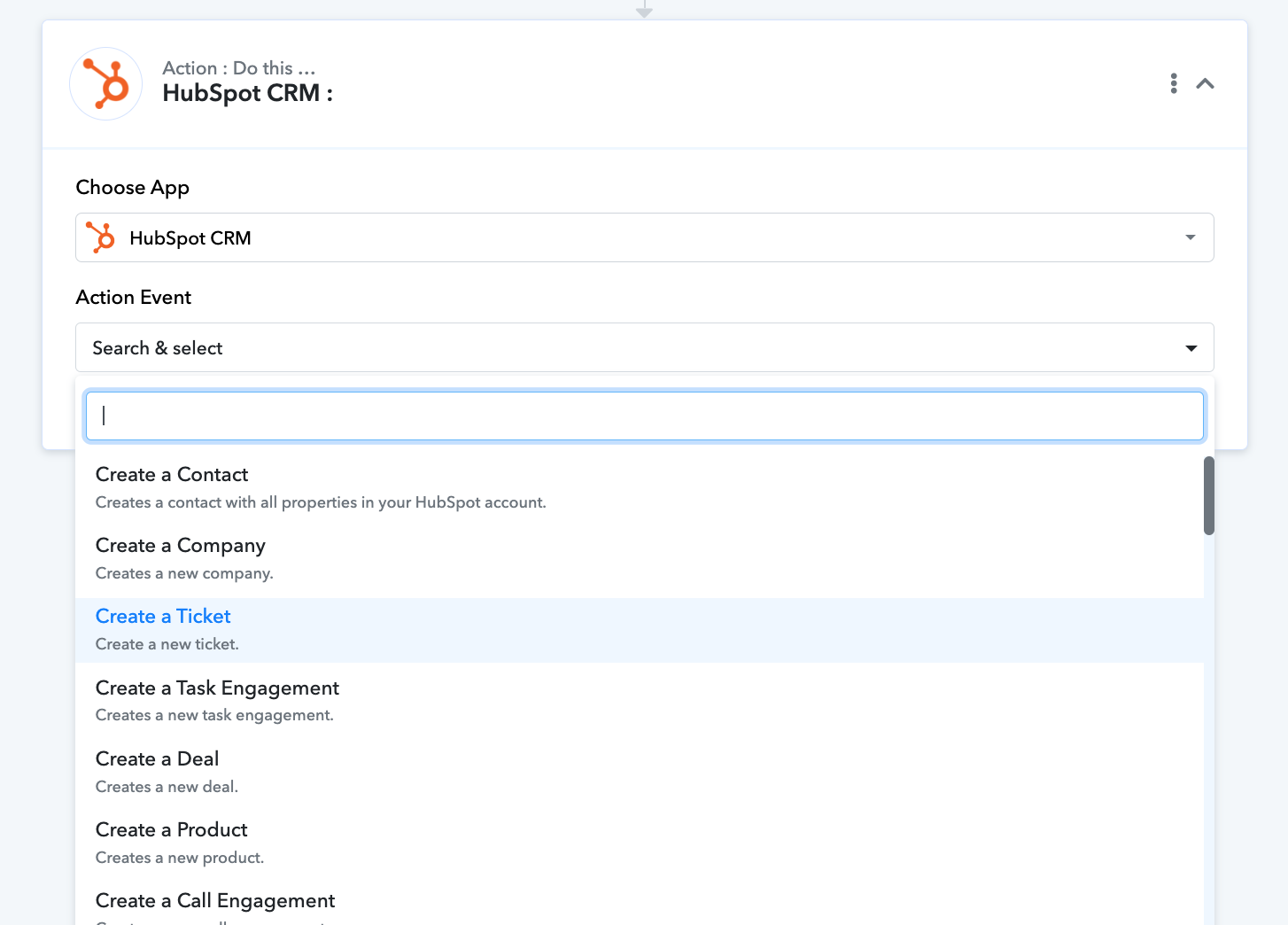
Fig. 14. Selecting “Create a Ticket” action event
Step 13 Select “Add New Connection”, enter New connection name, for example “HubSpot CRM #1” and click “Connect With HubSpot CRM” button (Fig. 15).
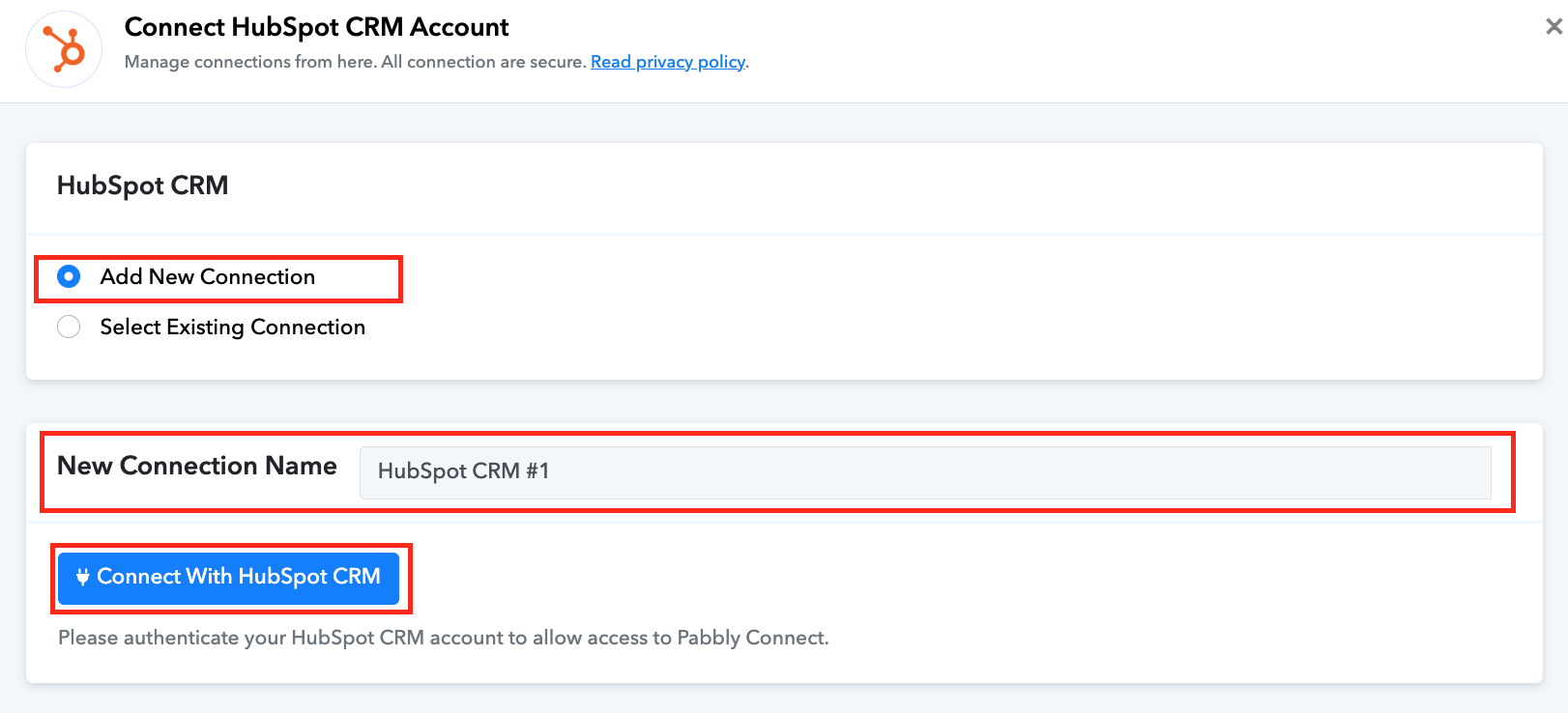
Fig. 15. Creating a “HubSpot CRM” connection
Step 14 Please note: Your company’s HubSpot CRM internal setup and workflow configuration may differ from the scenario we have used in this example.
To create tickets on Hubspot CRM enter the following data (Fig. 16 and Fig. 17):
Close Date: <empty>;
Create Date: Select it, then expand “1. DIDWW: Receive Voice IN Call Event” and choose “1. Attributes Time Start”;
Business Units: <empty>;
File Upload: <empty>;
Pipeline: 0 (In the HubSpot CRM used for this scenario, this stands for “Support Pipeline”);
Ticket Status: 1 (In the HubSpot CRM used for this scenario, this stands for “New”);
Resolution: None;
Category: “General Inquiry”;
Priority: “Medium”;
Ticket Name: “Call From <expand ‘1. DIDWW: Receive Voice IN Call Event’ and select ‘1. Attributes SRC Number’> At <expand ‘1. DIDWW: Receive Voice IN Call Event’ and select ‘1. Attributes Time Start’>”;
Ticket Description: “This ticket is automatically created for an incoming voice call.
Received at: <expand ‘1. DIDWW: Receive Voice IN Call Event and select ‘1. Attributes Time Start’>
From source number: <expand ‘1.DIDWW: Receive Voice IN Call Event’ and select ‘1. Attributes Src Number’>
To destination number: <expand ‘1. DIDWW: Receive Voice IN Call Event’ and select ‘1. Attributes Did Number’>”
Source: “Phone”;
Ticket Owner: <empty>;
Click “Save” to save changes or alternatively click “Save & Send Test Request” to check request response on site.
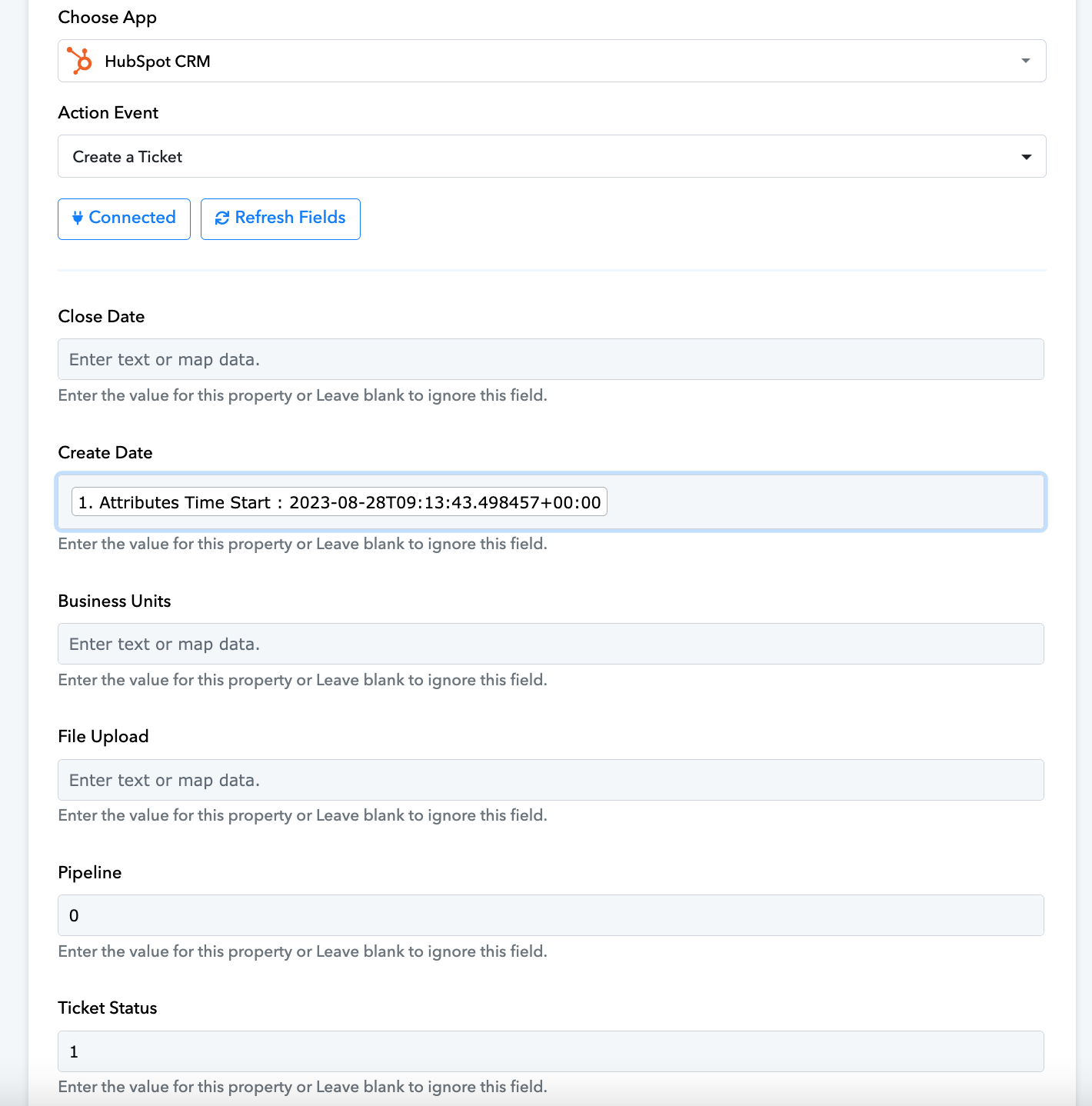
Fig. 16. Configure Hubspot CRM app “Create a Ticket” fields Part 1
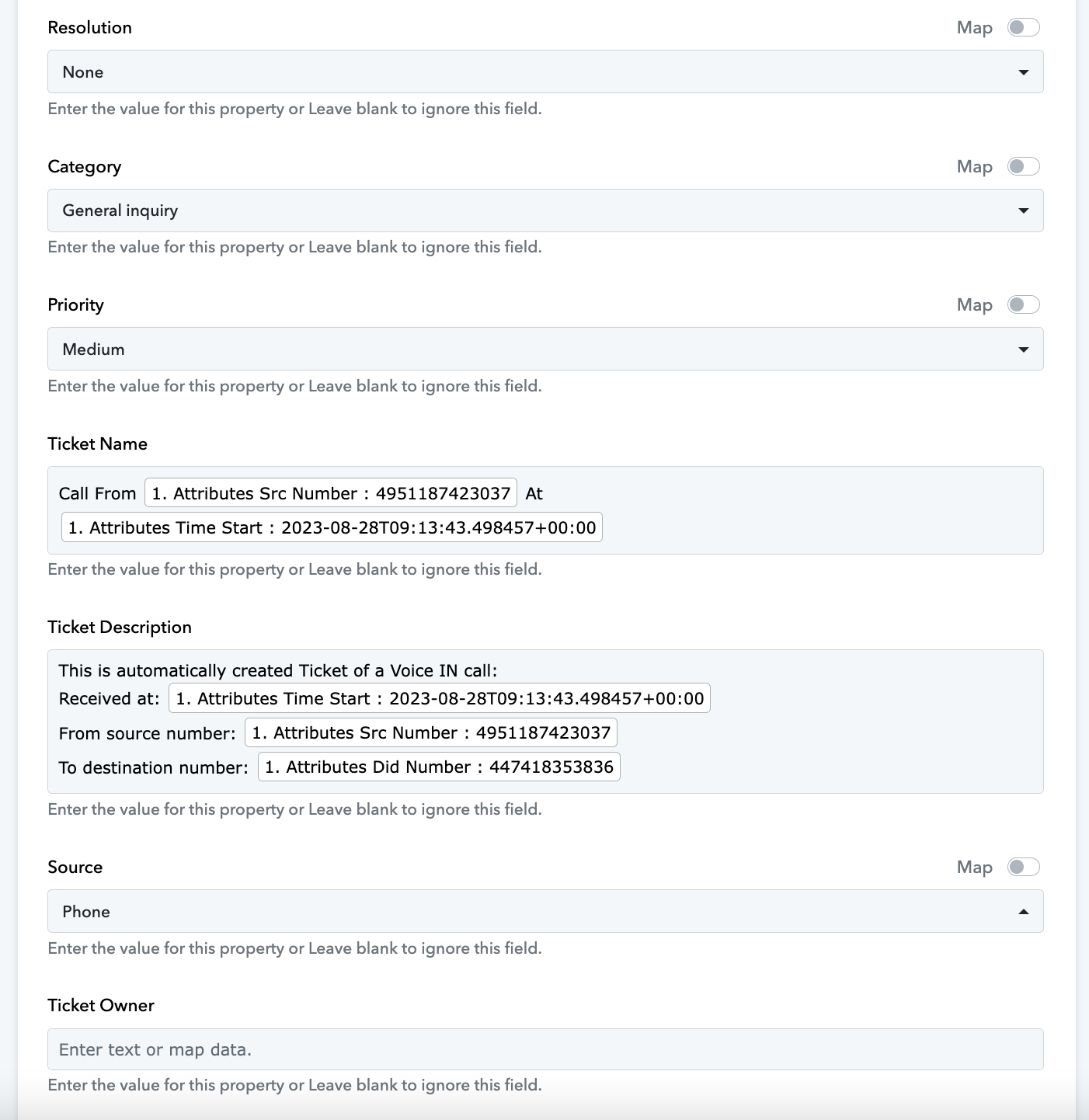
Fig. 17. Configure Hubspot CRM create Ticket fields Part 2
Step 15 Place a test call to your DIDWW DID number. In your HubSpot CRM, a new ticket will be automatically generated, capturing the details of the incoming voice call (Fig. 18).

Fig. 18. HubSpot Ticket created for Voice IN DIDWW DID call event via Pabbly
DIDWW Voice OUT Call Events and Pabbly Webhook
DIDWW Voice OUT Call Events allow you to receive notifications when outgoing calls are made via a DIDWW Voice OUT Trunk. When configured with a Pabbly Webhook, this feature can integrate with apps available on the Pabbly platform, enabling other applications to receive real-time updates about call statuses, including when calls are started, connected, or ended.
Getting started
What you need to get started:
Configuring DIDWW Voice OUT Call Events and Pabbly Webhook
As a use case example, we will set up DIDWW Voice OUT Call Events for a specific DID number. After each outbound call is completed, its details will be automatically recorded in a Google Sheet. While we are using Google Sheets in this example, you have the flexibility to choose any other app available on the Pabbly platform to suit your specific idea, automation, task, or project. For instance, outgoing voice calls could automatically trigger events or tasks in your preferred CRM or task management software.
Step 1 Create a “Workflow” in your Pabbly account (Fig. 1).
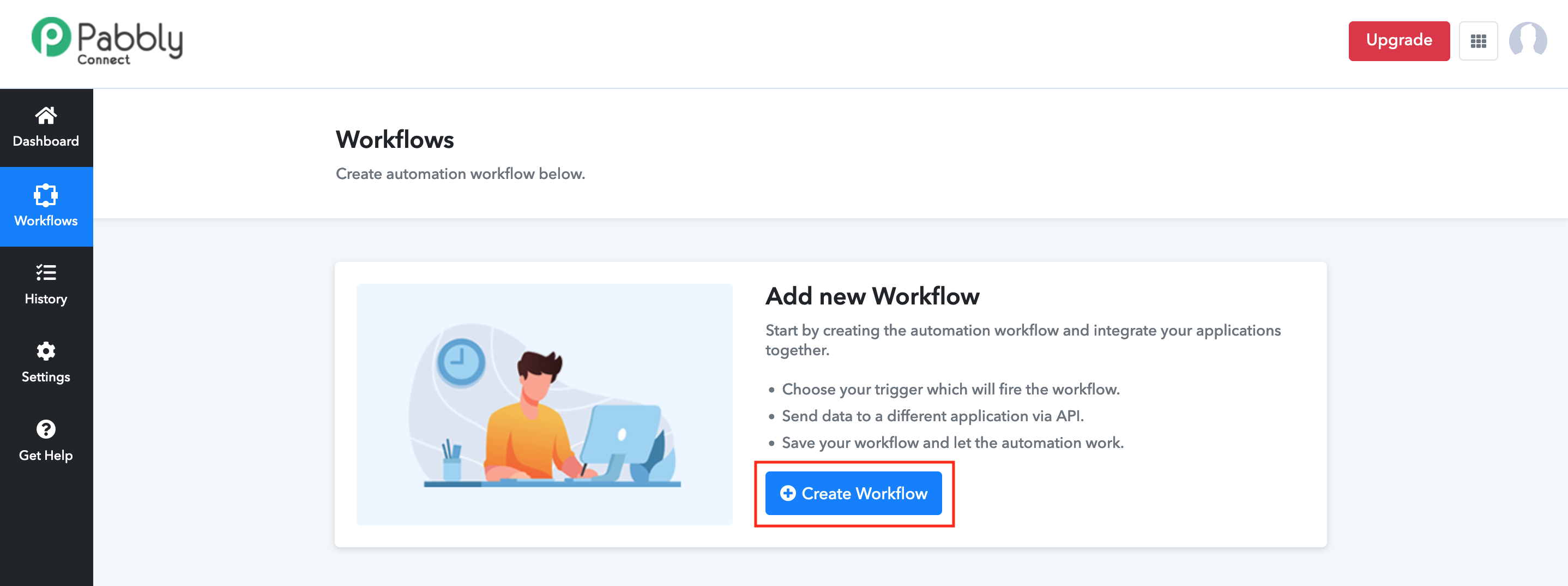
Fig. 1. Creating a new Workflow
Step 2 Enter any friendly name for your Workflow, such as “DIDWW VOICE OUT Call Events And Google Sheets” and click “Create”. (Fig. 2)
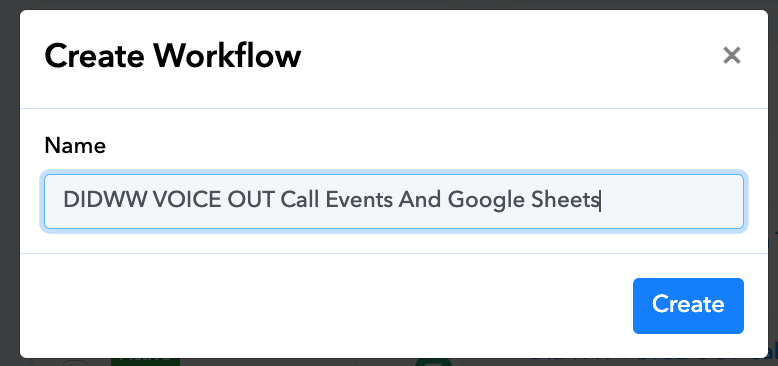
Fig. 2. Setting a Name of your Workflow
Step 3 Under the “Choose App” field search for “DIDWW” and select it. (Fig. 3)

Fig. 3. Selecting “DIDWW” app
Step 4 Select “Voice Out Call Events” as your Trigger Event (Fig. 4).
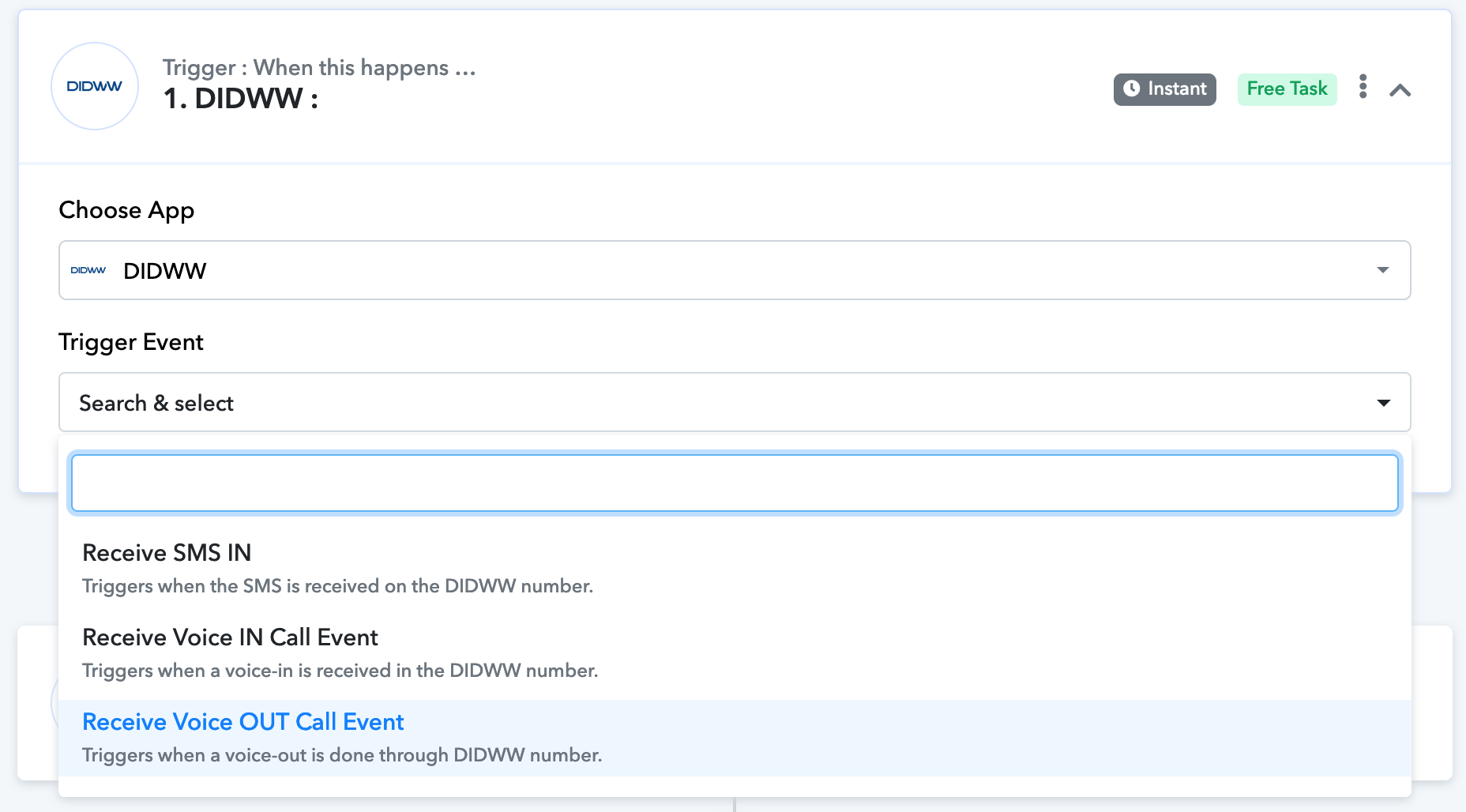
Fig. 4. Selecting “Receive Voice Out Event” Trigger Event
Step 5 Copy the “Webhook URL” that is automatically generated by Pabbly (Fig. 5). This URL will be used in STEP 6 for configuring DIDWW Voice OUT Call Events.
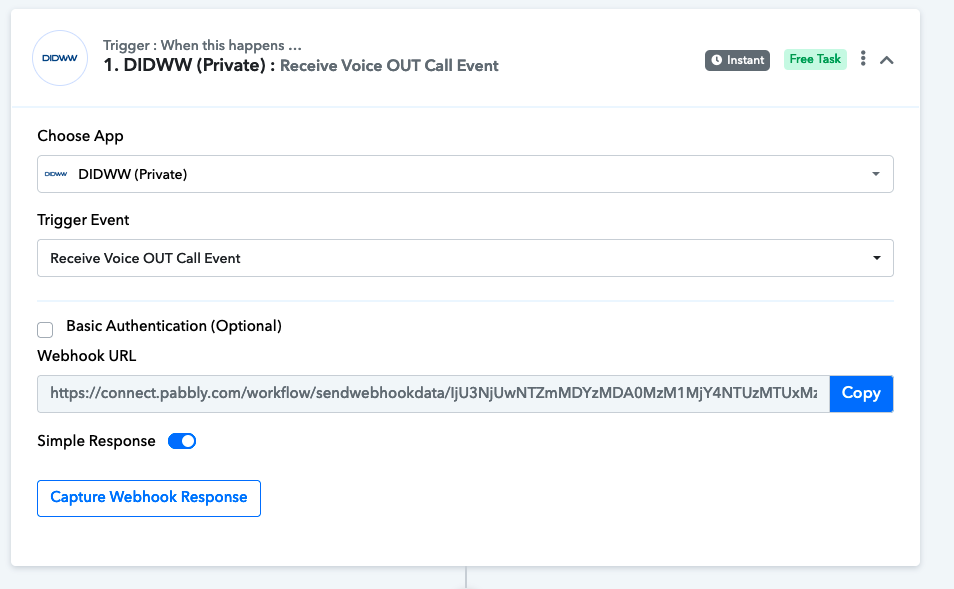
Fig. 5. Copy Pabbly webhook URL
Step 6 In your DIDWW account navigate to menu section APIs -> Call Events API -> Call Events and then click Configure for Voice OUT service (Fig. 6).
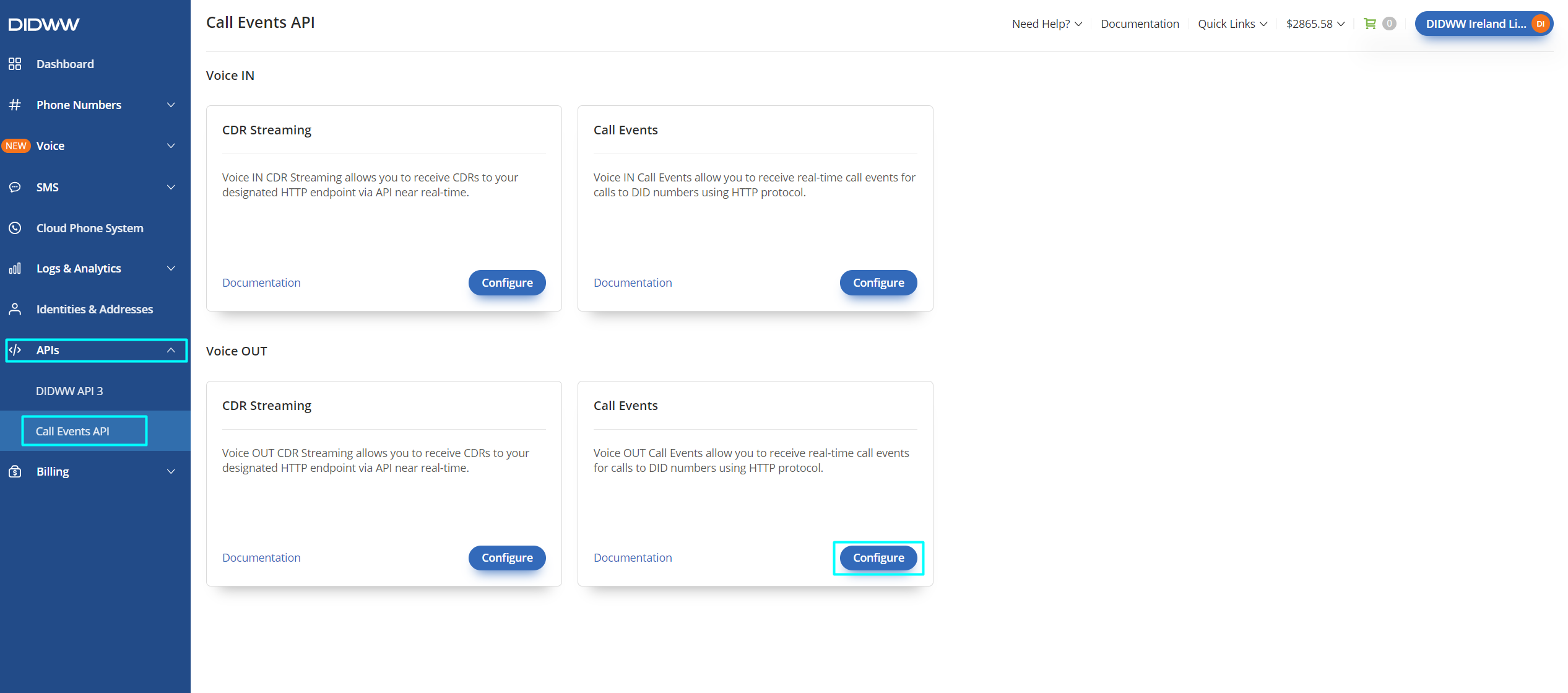
Fig. 6. Enabling and configuring “DIDWW Voice OUT Call Events”
Step 7 On the Voice OUT Call Events configuration page (Fig. 7), enter the Pabbly Webhook URL that was generated in Step 5. Make sure to disable GZIP compression, and then click “Submit” to save your settings.
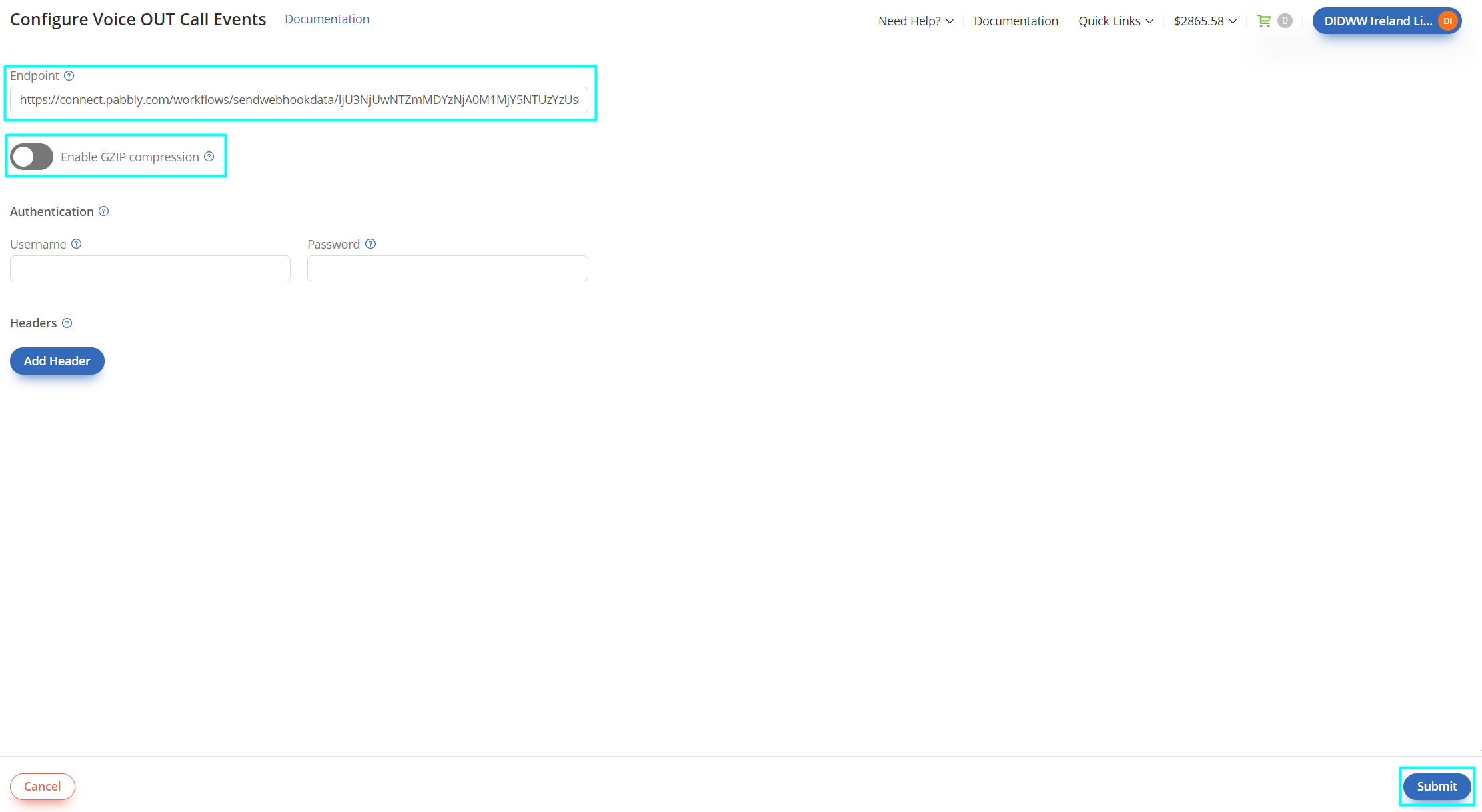
Fig. 7. Add Pabbly URL address and disable GZIP compression
Step 8 Make a test call using your DIDWW Voice OUT Trunk. The webhook request and associated call data should then appear in the Pabbly “Test Trigger” form (Fig. 8).
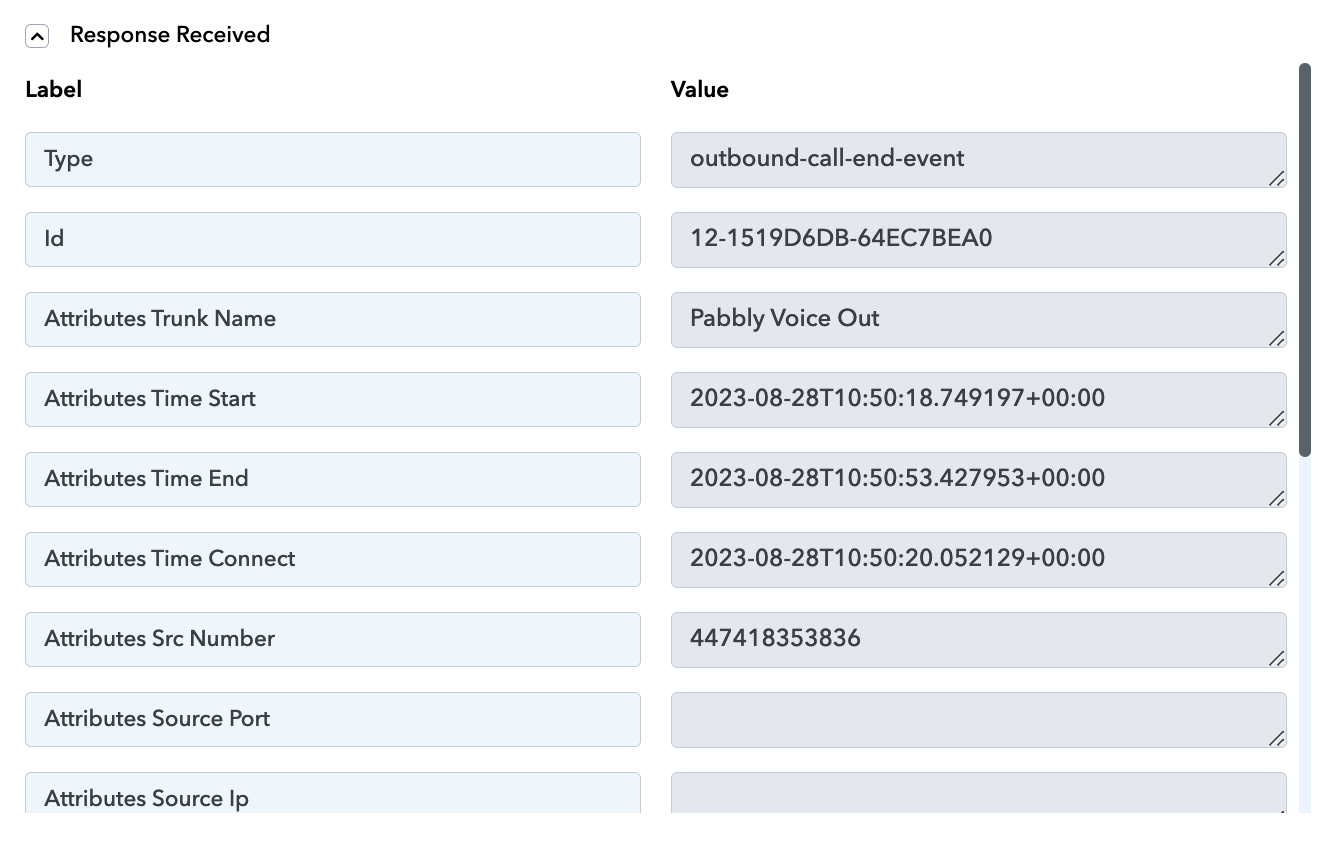
Fig. 8. Captured test Webhook response
Step 8. Make a test call using your DIDWW Voice OUT Trunk. The webhook request and associated call data should then appear in the Pabbly “Test Trigger” form (Fig. 8).

Fig. 8. Captured test Webhook response
Step 9 DIDWW Voice OUT Call Events sends three requests (outbound-call-start-event, outbound-call-connect-event, outbound-call-end-event). Full details and all possible values of DIDWW Voice OUT Call Events can be found here . For our scenario we will focus on adding a new row to Google Sheet using “outbound-call-end-event”.
Click the “Add Action Step” button, search for “Filter” and select it (Fig. 9).
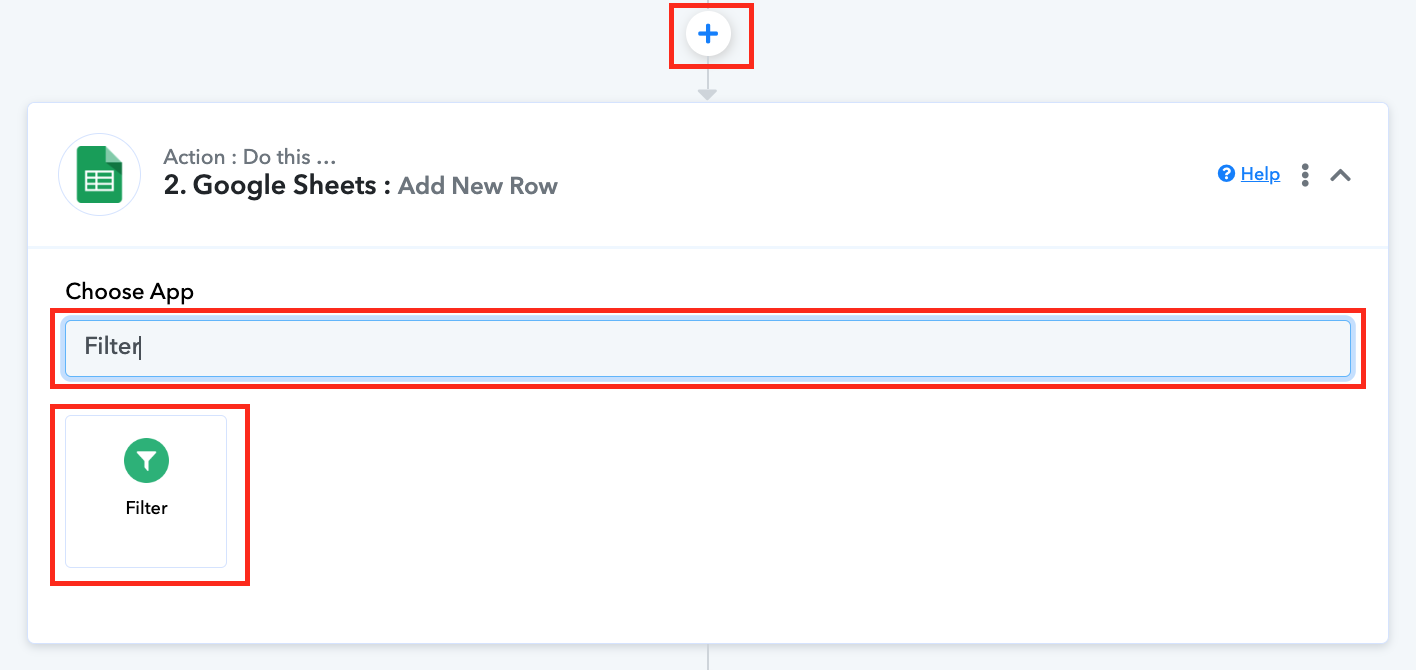
Fig. 9. Selecting “Filter” as Action Step
Step 9 Use case: “Create Google Sheet record for calls longer than 100 seconds OR calls that are charged at a rate higher than 0.10 (our scenario)”.
In the first dropdown labeled “Select Label” select: Type
In the second dropdown labeled “Filter Type” select: Equal to
In the third box labeled “Value” enter text: outbound-call-end-event
Click “+” (plus) sign to add an additional filtering condition:
In the first dropdown labeled “Select Label” select: Attribute Duration
In the second dropdown labeled “Filter Type” select: Greater than
In the third box labeled “Value” enter text: 100
Click “ + OR Condition” button:
In the first dropdown labeled “Select Label” select: Type
In the second dropdown labeled “Filter Type” select: Equal to
In the third box labeled “Value” enter text: outbound-call-end-event
Click “+” (plus) sign to add an additional filtering condition:
In the first dropdown labeled “Select Label” select: Attribute Rate
In the second dropdown labeled “Filter Type” select: Greater than
In the third box labeled “Value” enter text: 0.1
Click the “Save & Send Test Request” button to Save the configuration and review the received response (Fig. 10).
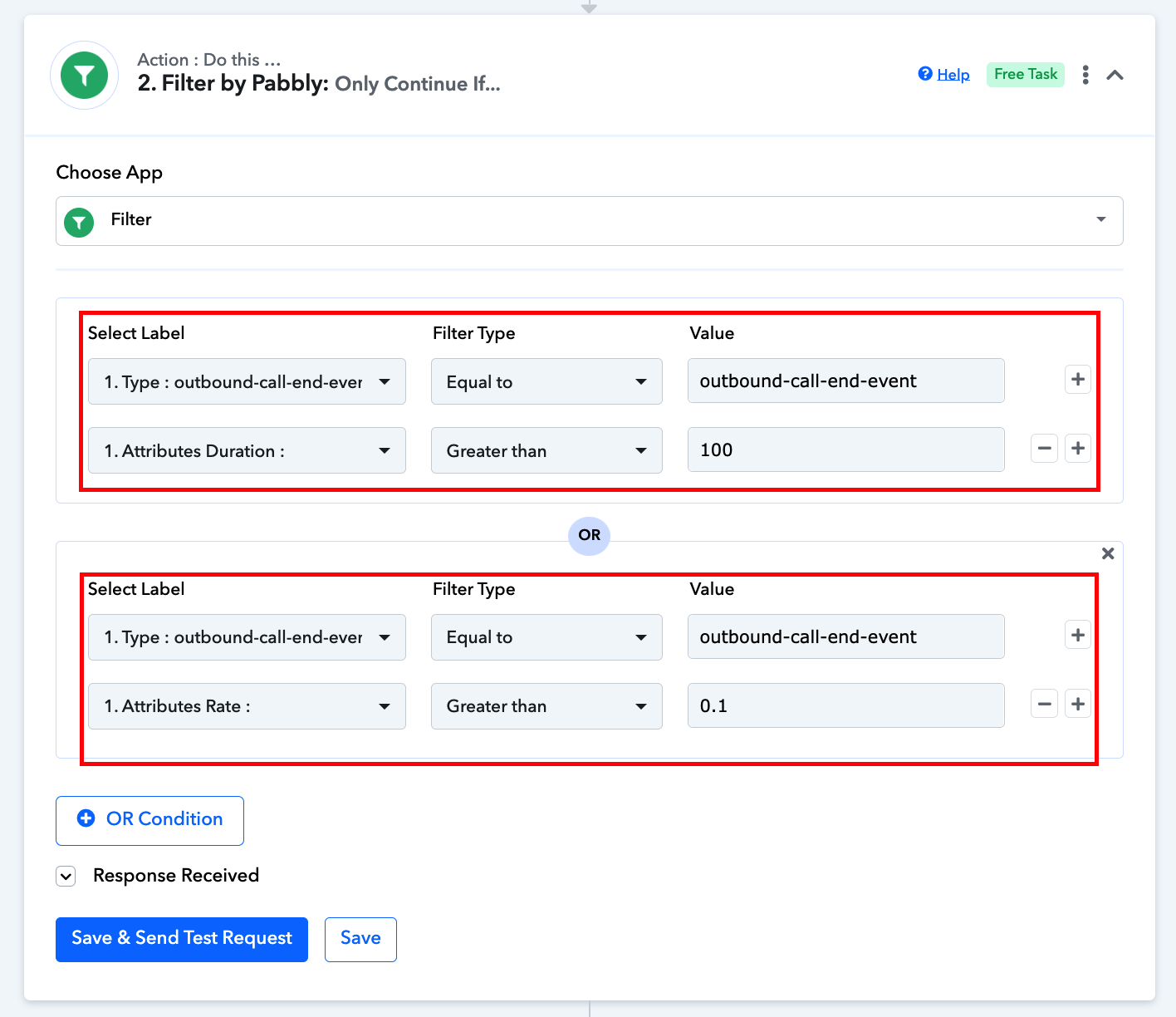
Fig. 10. Use case: “Create Google Sheet record for calls longer than 100 seconds OR calls that are charged at a rate higher than 0.10 (our scenario)” action “Filter” configuration
Use case: “Create a Google Sheet record for only unanswered/missed calls:
In the first dropdown, labeled “Select Label,” choose: Type
In the second dropdown, labeled “Filter Type,” select: Equal to
In the third box, labeled “Value,” enter the text: outbound-call-end-event
Click the “+” (plus) sign to add an additional filtering condition:
In the first dropdown, labeled “Select Label,” choose: Type
In the second dropdown, labeled “Filter Type,” select: Equal to
In the third box, labeled “Value,” enter the text: 0.
Click the “Save & Send Test Request” button to Save the configuration and review the received response (Fig. 11).
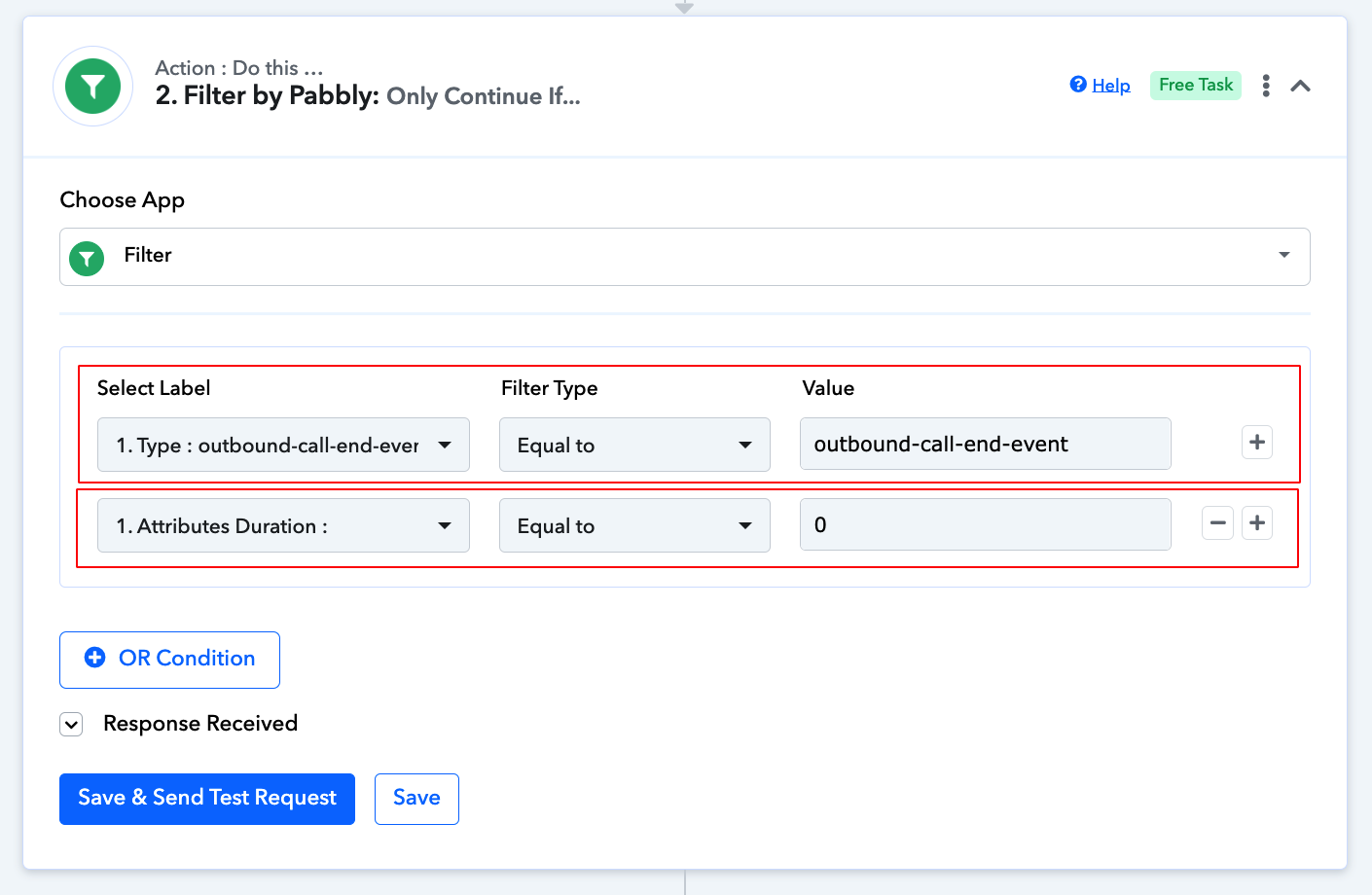
Fig. 11. Use case: “Create Google Sheet record for only unanswered/missed calls” action “Filter” configuration
Step 11. Click the “Add Action Step” button, search for “Google Sheets” and select it (Fig. 12).
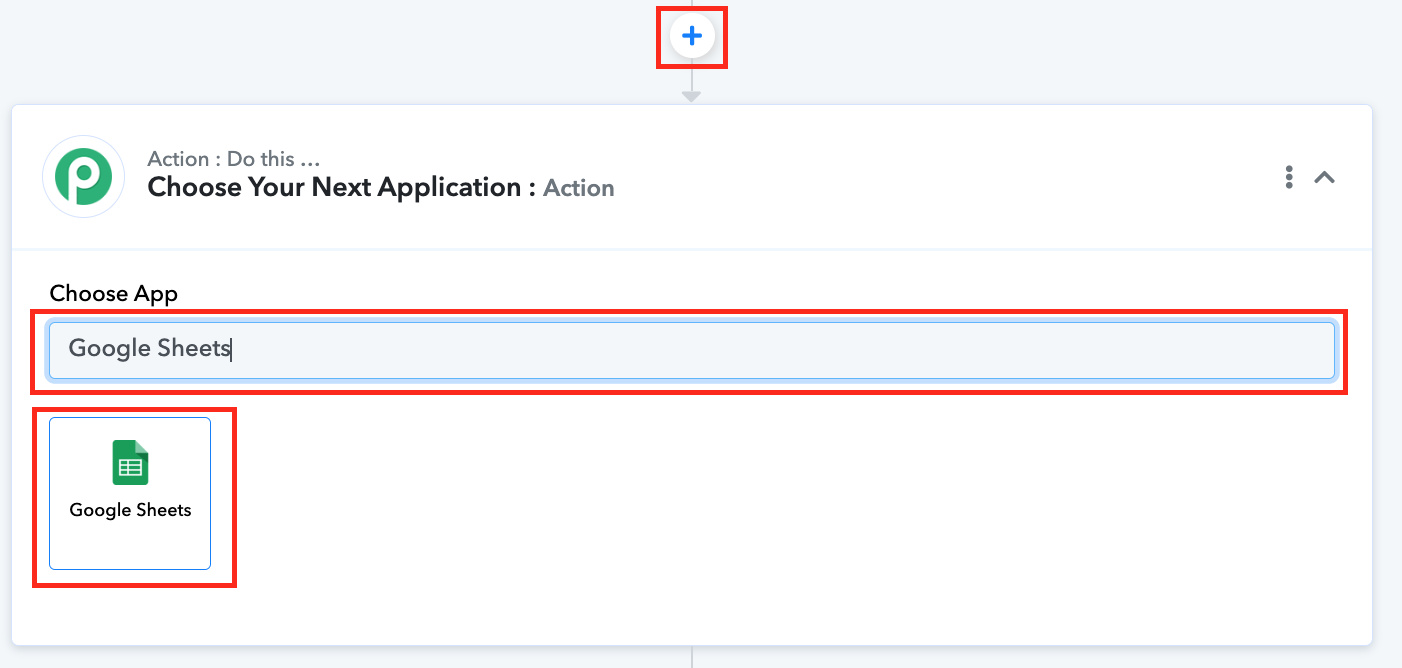
Fig. 12. Selecting “Google Sheets” app
Step 12. Select “Add New Row” from the action event dropdown menu (Fig. 13).
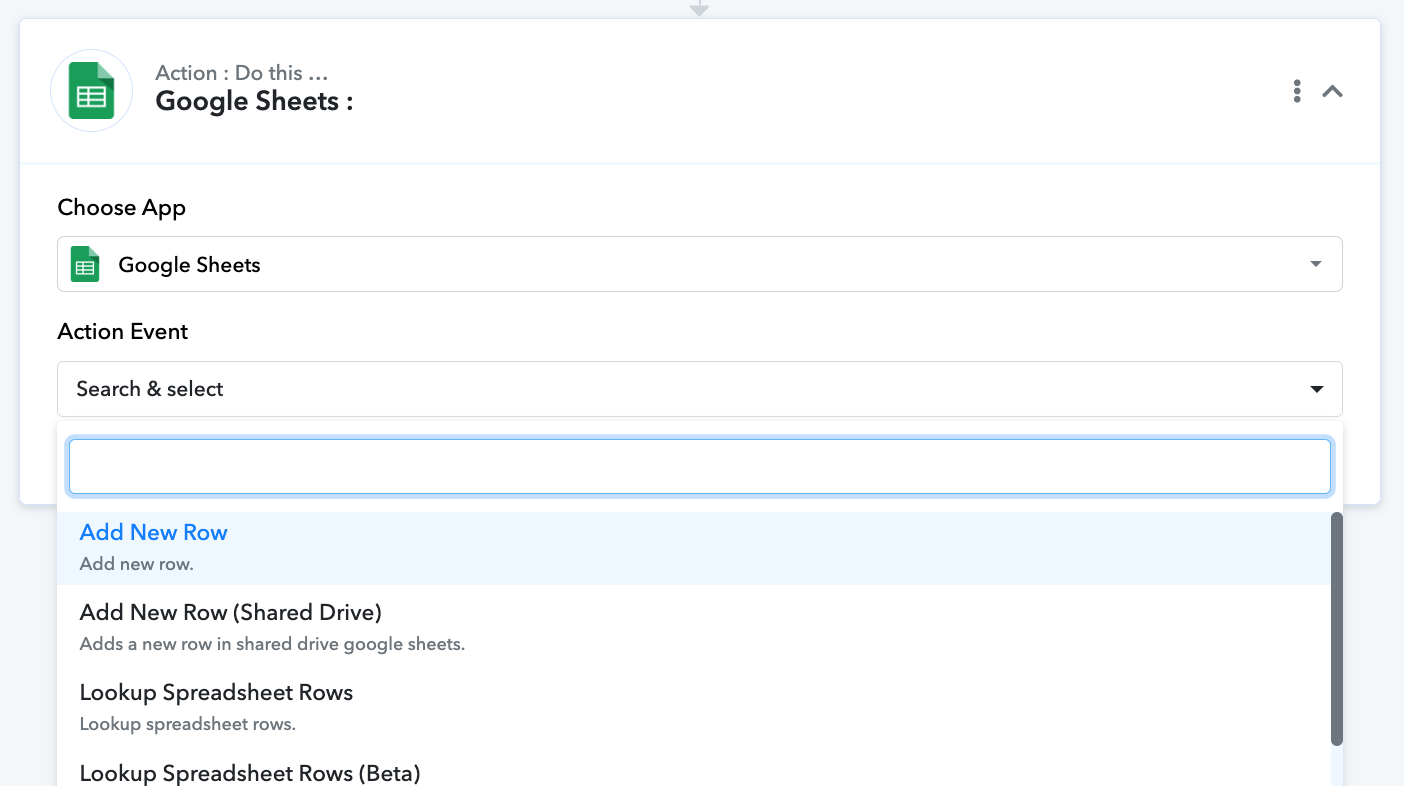
Fig. 12. Selecting “Add New Row” action event
Step 13. Click “Connect”, choose “Add New Connection” or “Select Existing connection” and click ”Sign in with Google” (Fig 14.)
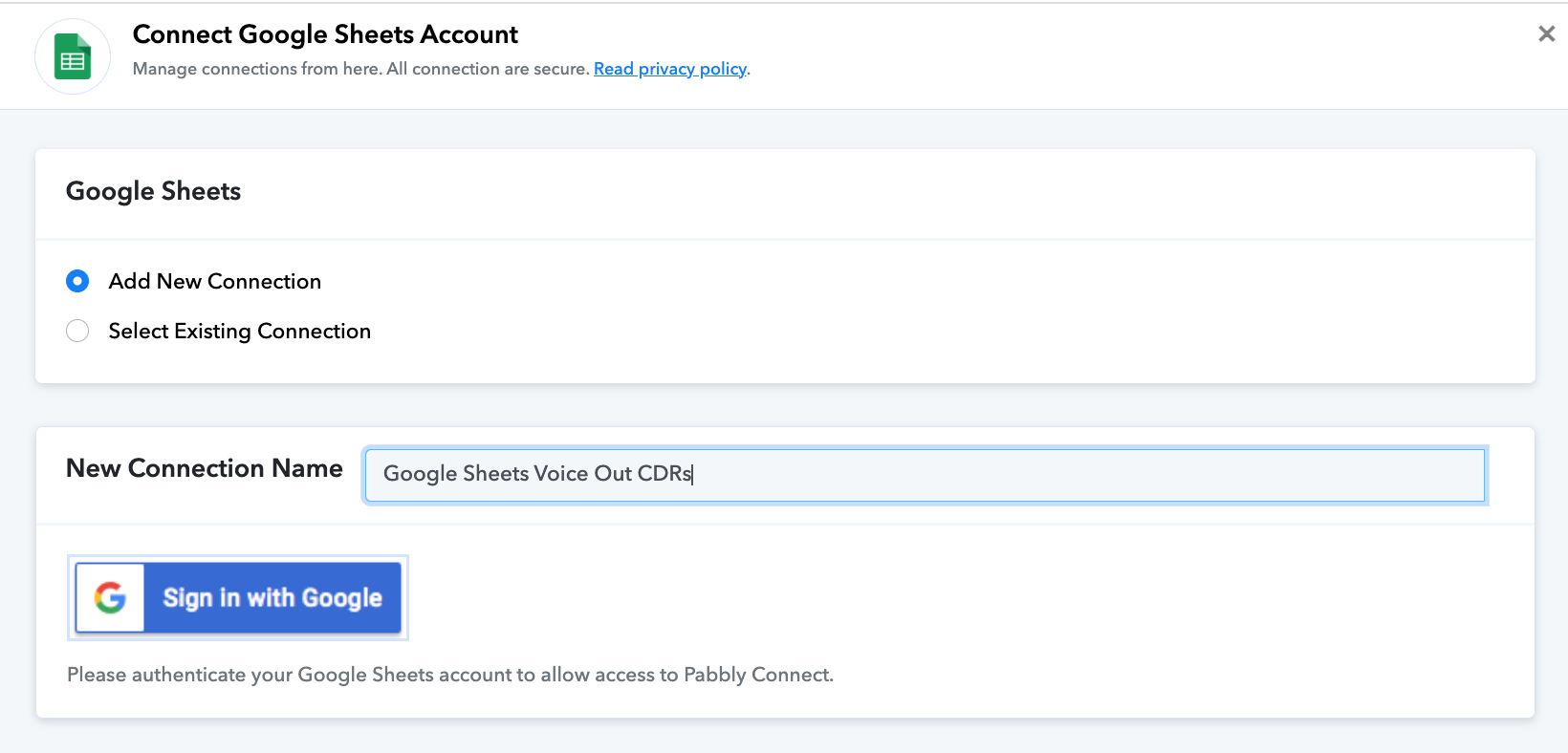
Fig. 14. Creating a “Google Sheets” connection
Step 14. Prepare a spreadsheet in Google Sheets with all relevant information. For our example we will be using a Google Sheet file named “Voice OUT Events CDRs”, sheet named “Sheet1” with column names: “DateTime”, “Source number”, “Destination number”, “Duration”, “Rate” (Fig. 15).
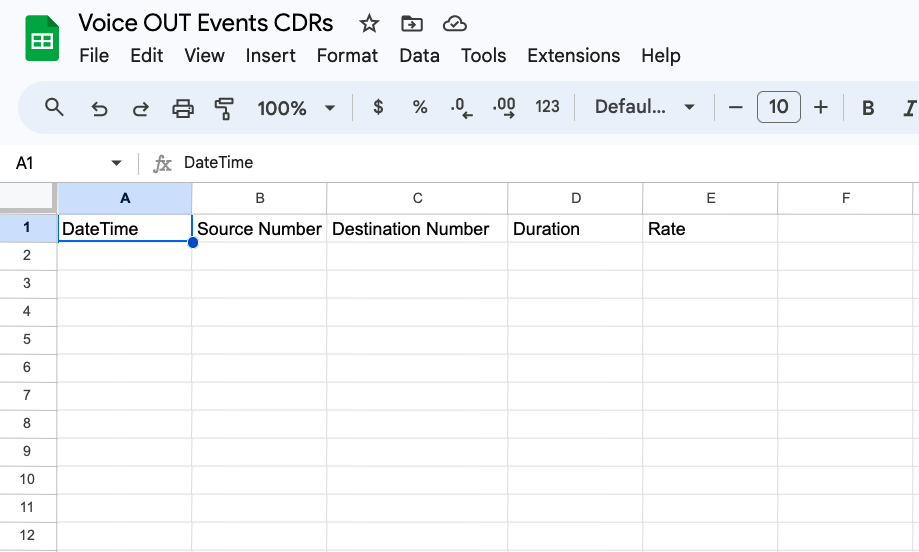
Fig. 15. Example of a “Google Spreadsheet”
Step 15. Once your “Google Sheets” file is set up with all the required fields from Step 14, configure the corresponding fields on the Pabbly side to match your Google Sheets as follows:
Select Spreadsheet: Choose the Google Sheets file to use; in our case, it’s “Voice OUT Events CDRs”;
Select Sheet: Choose the specific sheet within the Google Sheets file to use; in our case, it’s “Sheet1.”;
DateTime: This field is used to store the date and time of the made outbound call. In our example, we choose “Attribute Time Start” from the “1. DIDWW: Receive Voice OUT Call Event” dropdown list.
Source Number: This field captures the source number of the outbound call. In our example, we choose “Attribute Src Number” from the “1. DIDWW: Receive Voice OUT Call Event” dropdown list;
Destination Number: This field captures the destination number of the outbound call. In our example, we choose “Attribute Dst Number” from the “1. DIDWW: Receive Voice OUT Call Event” dropdown list;
Duration: This field captures the duration of the outbound call. In our example, we choose “Attribute Duration” from the “1. DIDWW: Receive Voice OUT Call Event” dropdown list;
Rate: This field is used to store the rate associated with the outbound call. In our example, we choose “Attribute Rate” from the “1. DIDWW: Receive Voice OUT Call Event” dropdown list;
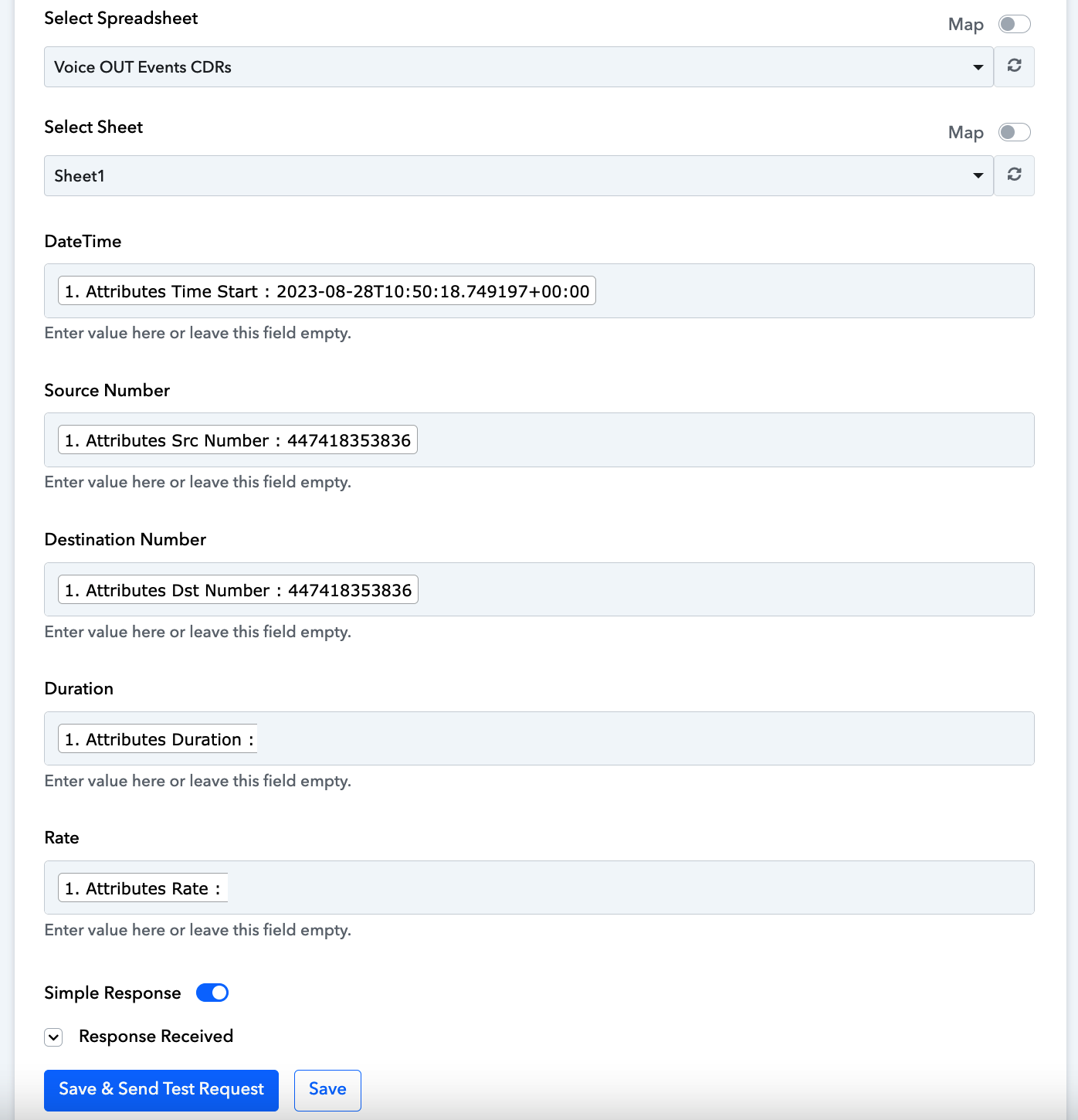
Fig. 16. Assigning fields on “Google Sheets app” from “DIDWW Voice Out” app
Step 16 Click the ‘Save & Send Test Request’ button ( Fig. 17) to review the data transferred from Pabbly to the Google Sheets file and to ensure that no errors are received (Fig. 18). During this test request, the Google Sheets file will receive and store the data. Alternatively, you can simply click ‘Save’ without sending a test request.

Fig. 17. Testing setup by clicking “Save & Send Test Request”
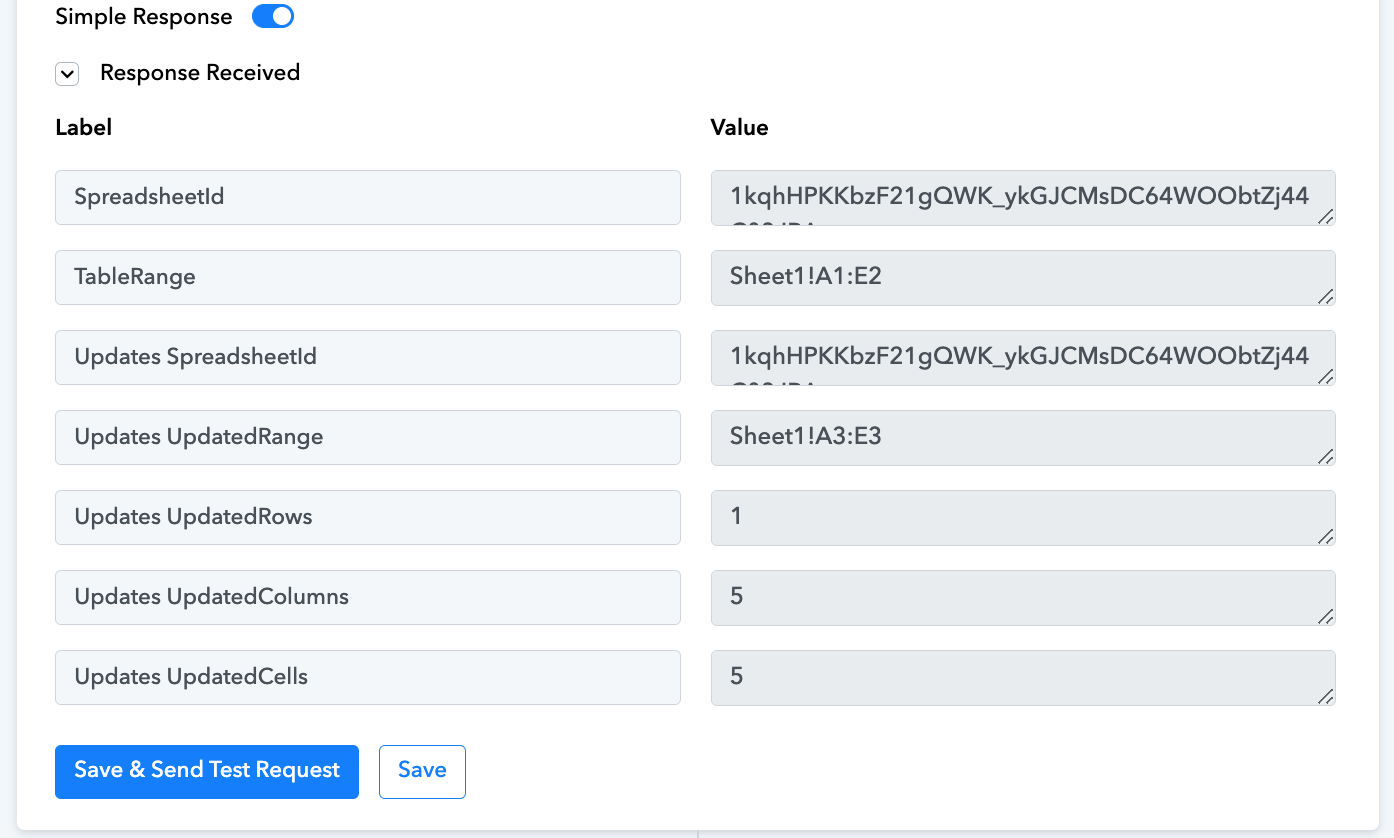
Fig. 18. Data passed from Pabbly to Google Spreadsheet
Step 17 At the end of each outgoing call via your DIDWW Voice OUT Trunk with specified DID number, Google Sheet will be updated with a new row containing call details (Fig. 19).

Fig. 19. Data passed and stored from Pabbly to Google Spreadsheet file